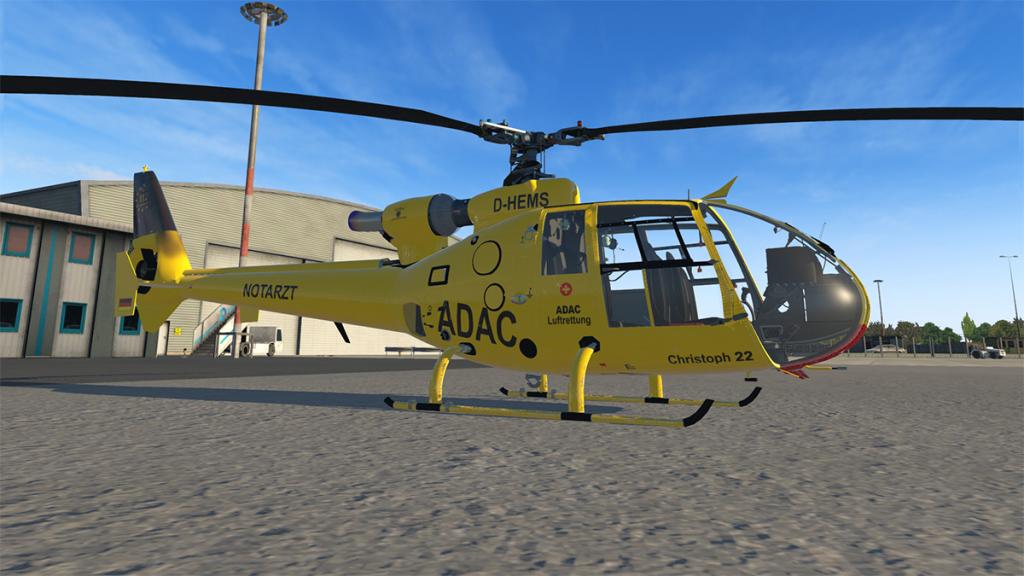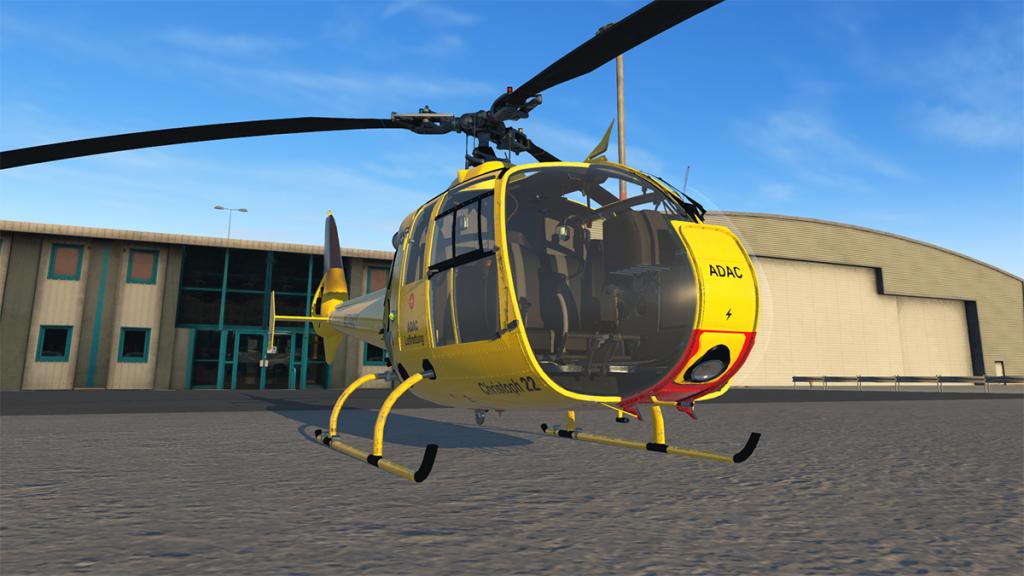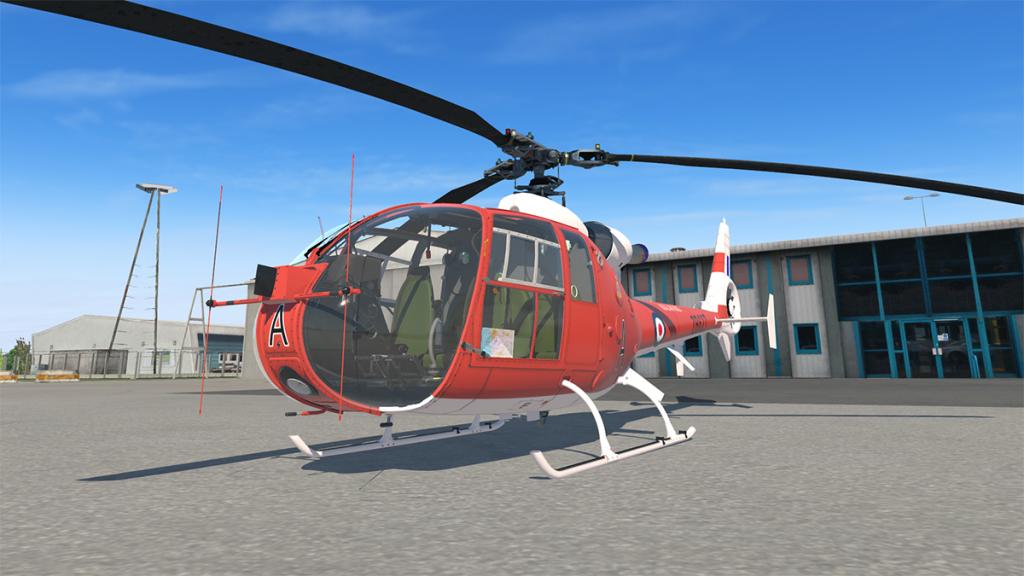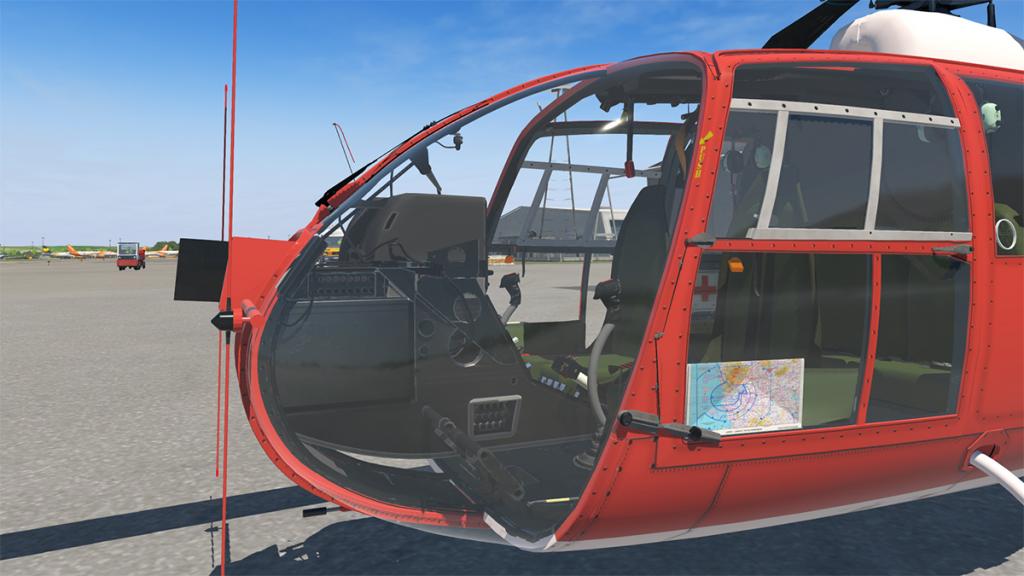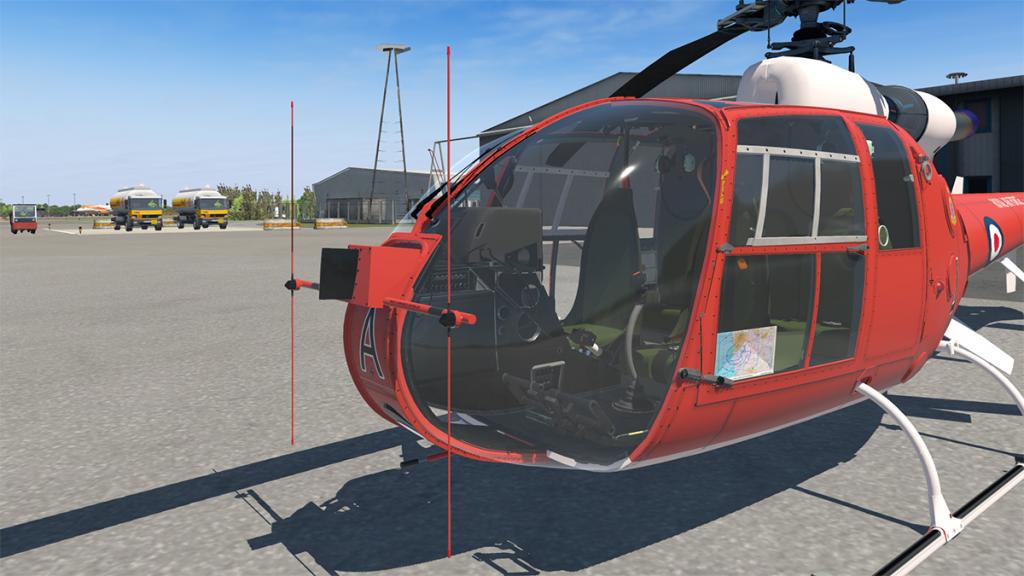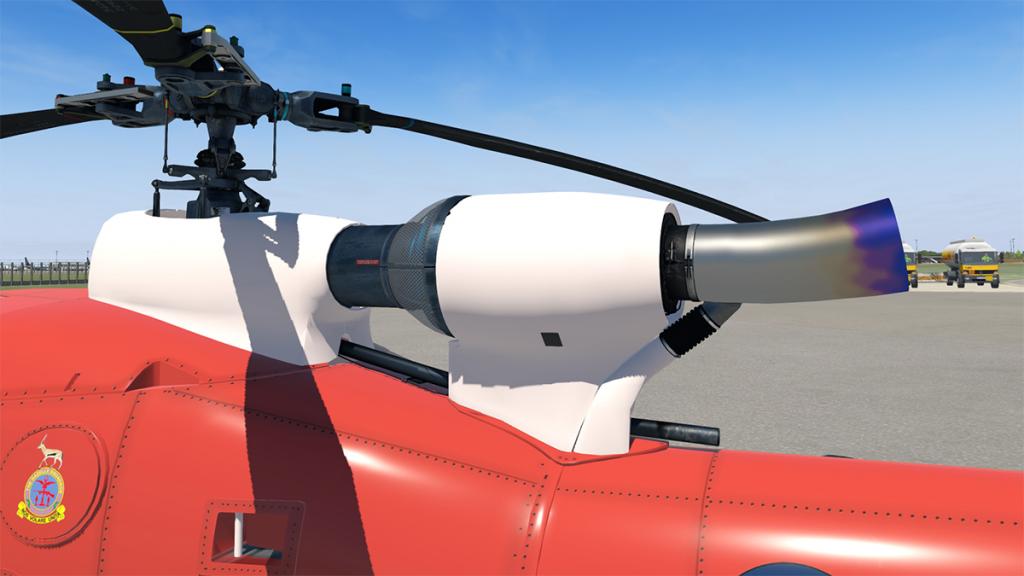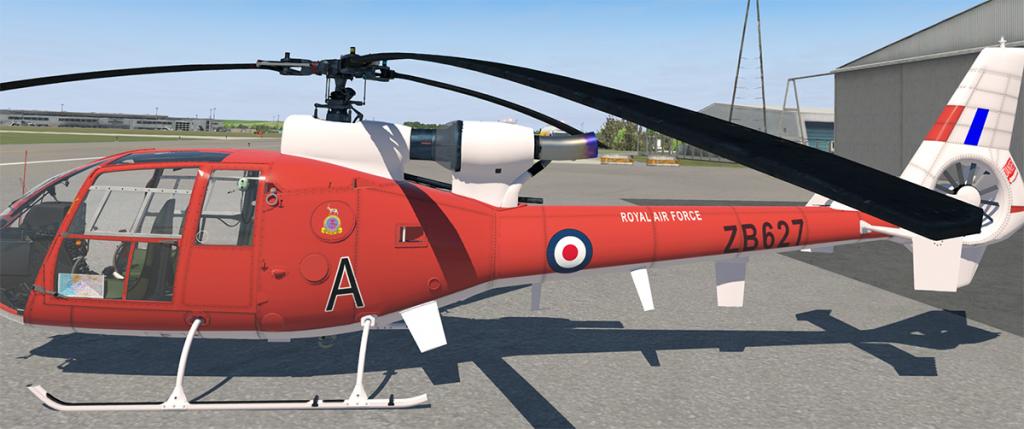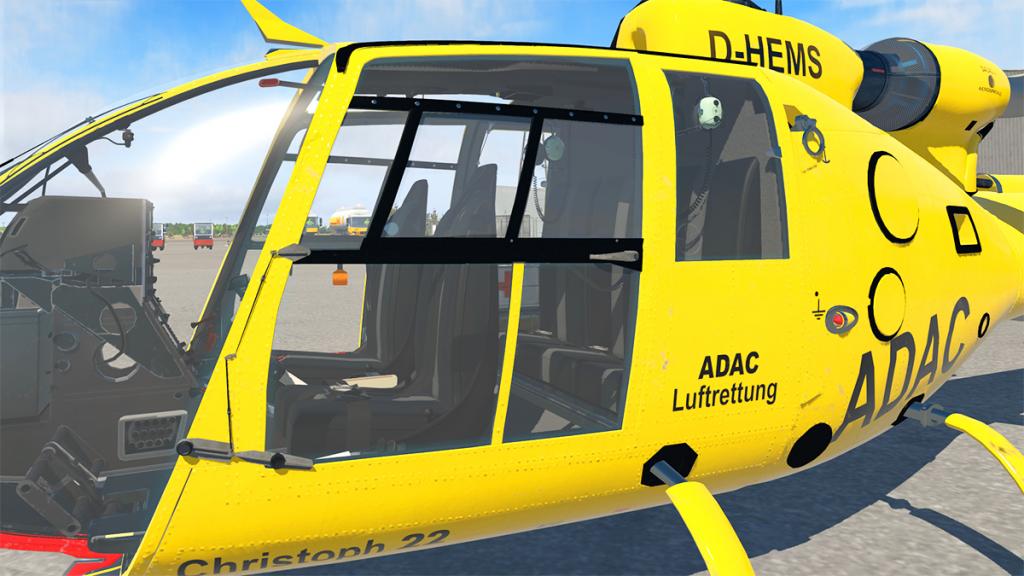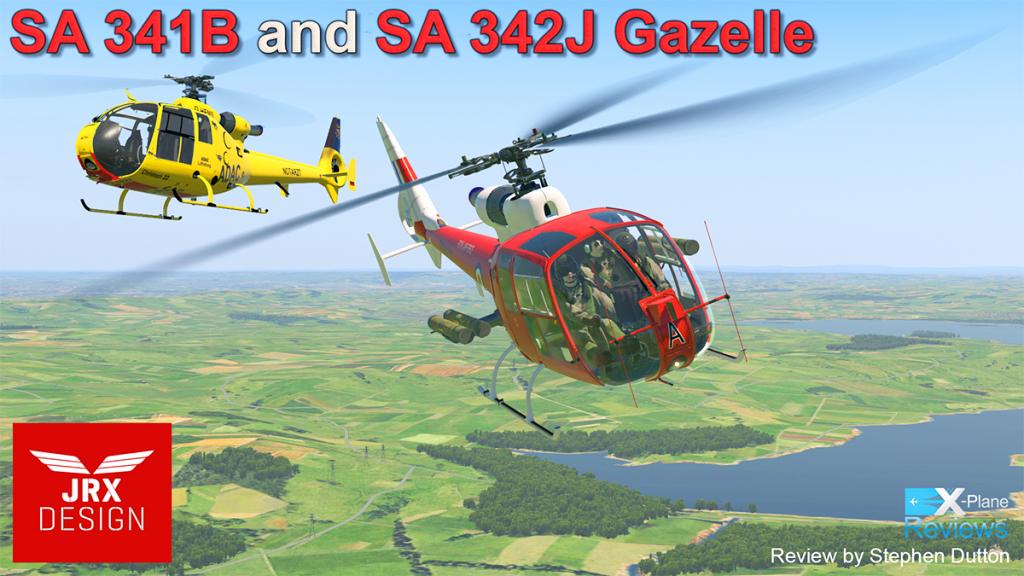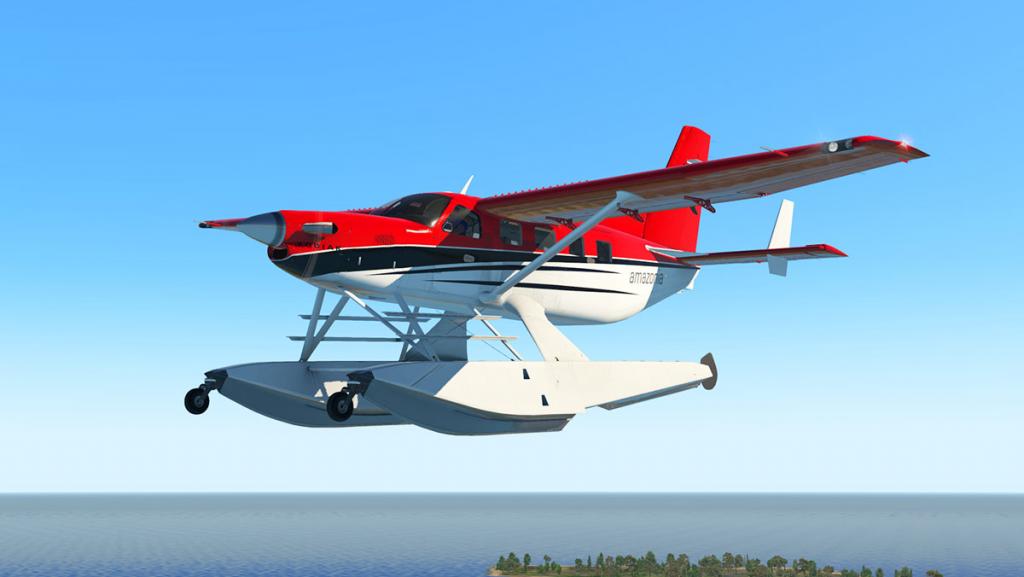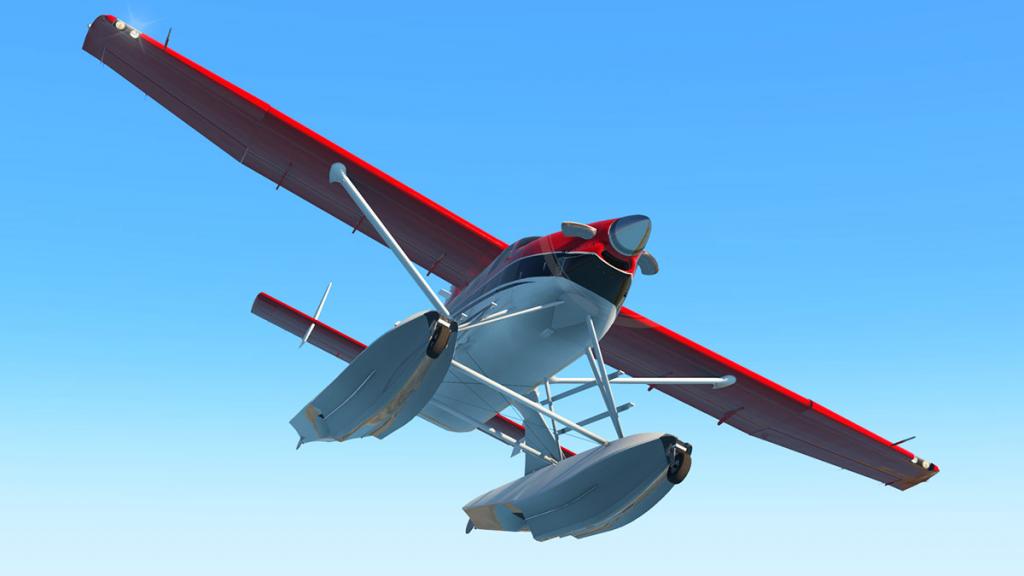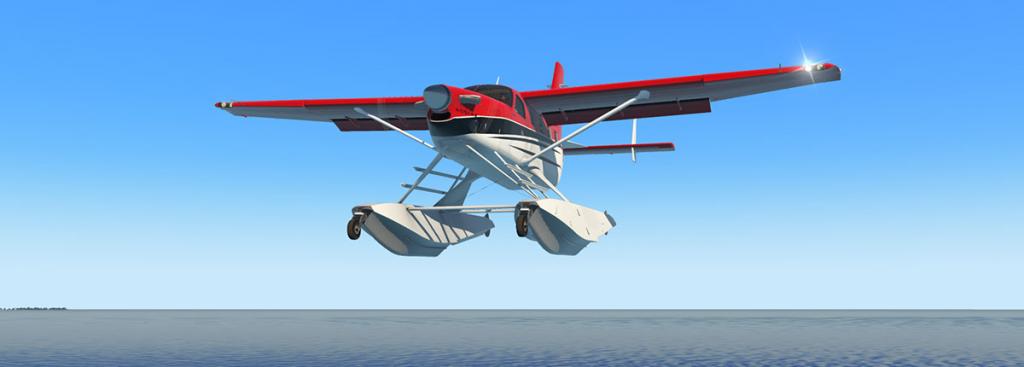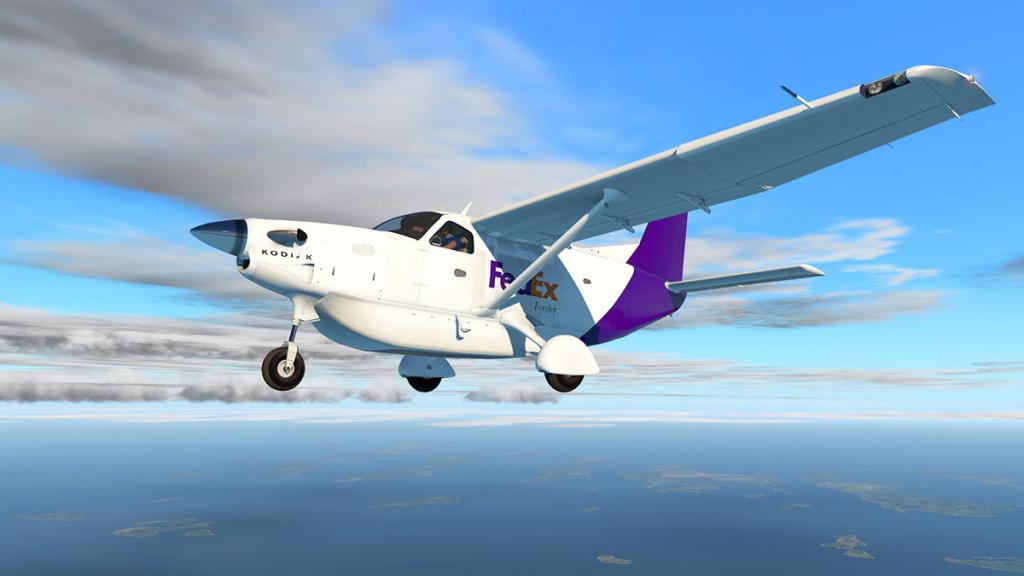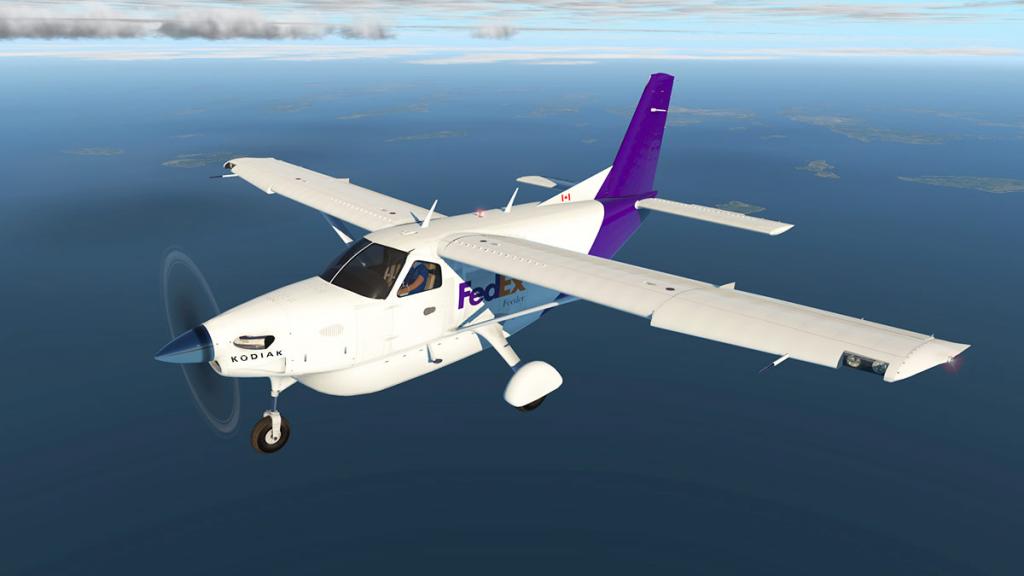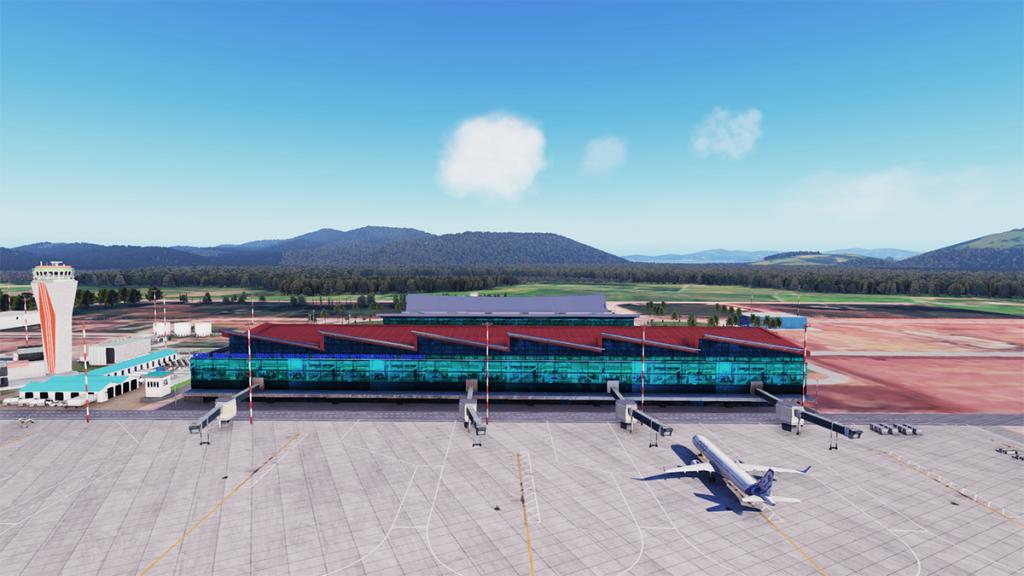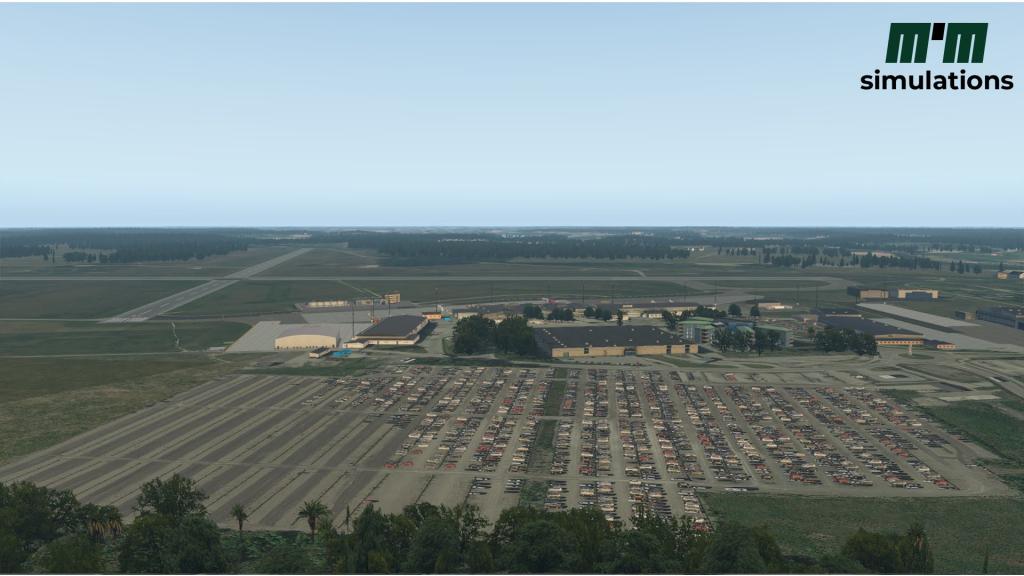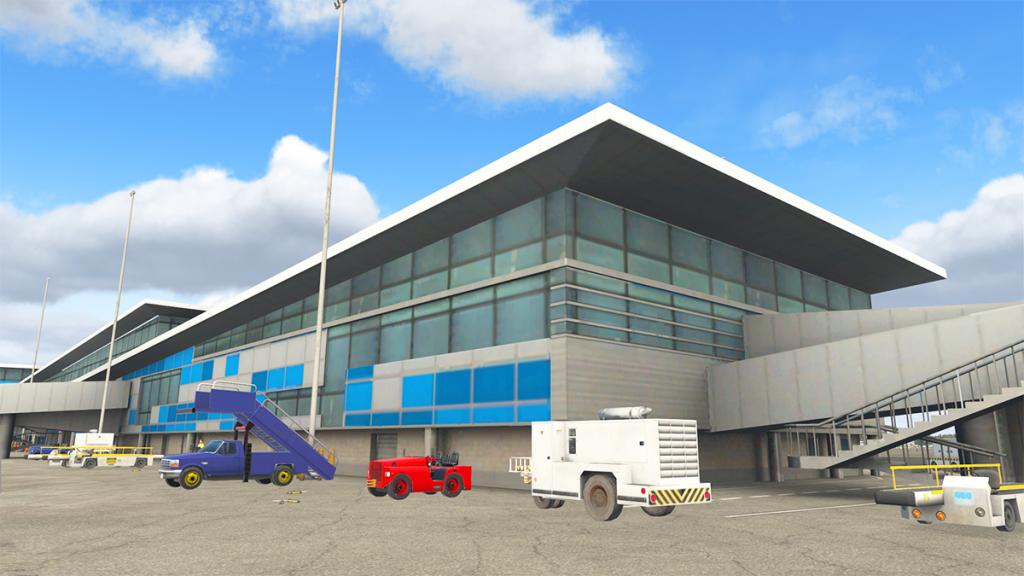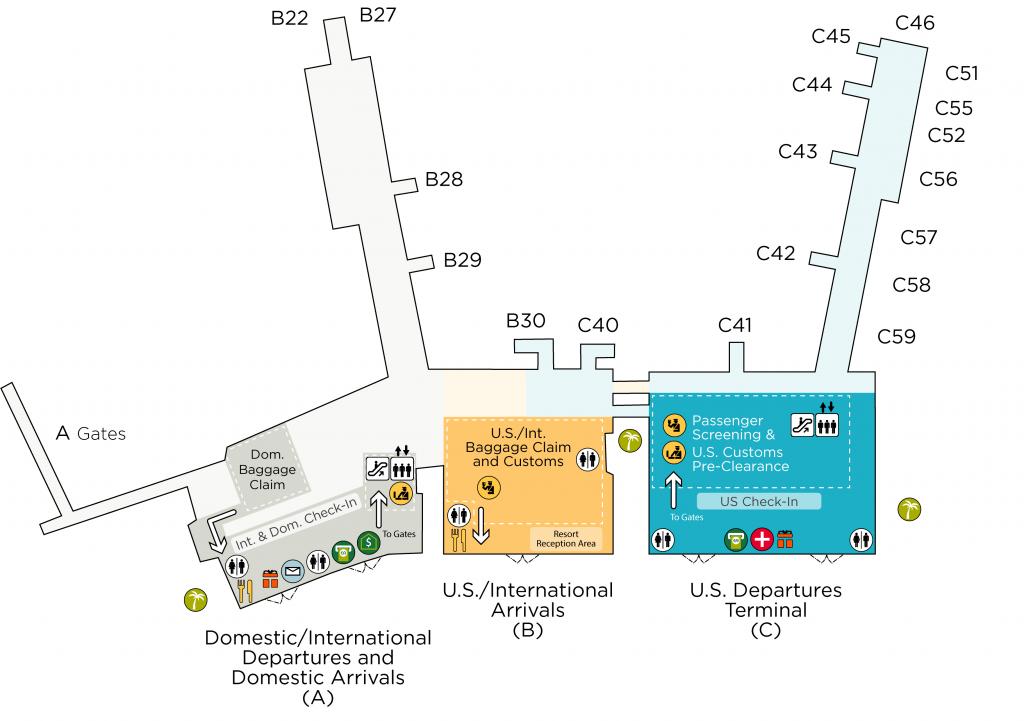-
Posts
2733 -
Joined
-
Last visited
-
Days Won
354
Content Type
Profiles
Forums
Articles
Everything posted by Stephen
-
News! - Project Update : MD11 by Rotate Rotate has released a WIP (Work In Progress) video of their forthcoming McDonnell Douglas DC-11 Tri-Jet for X-Plane11. The developer is noted for their excellent MD-80 which has a huge following in the simulator, and the larger MD-11 aircraft has been in development now for 3 years.... yes 3 years. The video shows extensively the MD-11's exterior model and detail, showing the concept is almost complete in this area. We also get our first comprensive look at the systems and the highly detail FMC integration, with functional flight management computer screens joining the primary flight displays in what appears to be in a completed and fully operational state. The developer also noted "The light at the end of the tunnel is getting bigger as we are approaching beta", yes a beta, so is an Easter Release imminent! Video courtesy of Rotate ____________________________ News by Stephen Dutton 3rd February 2021 Copyright©2021: X-Plane Reviews (Disclaimer. All images and text in this review are the work and property of X-PlaneReviews, no sharing or copy of the content is allowed without consent from the author as per copyright conditions)
-
RJAA Narita is very good, but yes there is a very bad (you could call it a anti-MSFS) feeling in that we can do the same thing but for free. That is bad for the business, you need quality in the simulator and no matter how good the Global Airport tools are, they are still not a complete reproduction of the airport... this is damaging the simulator on many levels.
-
Behind the Screen : January 2021 Another year in 2021, after 2020 it has to be better, change and a whole lot of it dominated the year, even in our little virtual corner of the world in Simulation. Did we mention Microsoft's new flight simulator release of last year, of course we did. The reality was that X-Plane didn't actually get atomised by MSFS on it's release, or anything else, in fact something interesting happened. According to the Navigraph Flightsim Community Survey which is always interesting reading, is that the mostly rejected FSX/FS9 and Prepar3D users didn't jump ship directly to MSFS 2020, but to X-Plane11 instead? in fact 41% came from FSX/FS9 and 24% came from P3D, that is only actually 4.8% of actual simulator platform switching in context, but still they chose to come to X-Plane11 and not over to the newer simulator of which 11% MSFS new users switched over to X-Plane as well, rather than going to another Simulator. The answer there is quite simple in the fact that MSFS actually still does not support study grade aircraft, certainly if you want to VFR (Visual Flight Rules) your way around the landscape then MSFS is the way to go, but for heavy operations and even with still the very light choices of even good and detailed General Aviation aircraft (no fighters or Helicopters either), then X-Plane is currently only your simulator of choice if you want to do some serious procedural flying. Overall it is difference between real simulation flying and playing a game. No doubt MSFS will throw off that tag as it develops more better SDK's, or will it, does it want to? That aspect is in the fact that in simulation there actually is not any money to be made, the customer focus is overall on the huge gaming market. And this is were it gets interesting in the target market. If MSFS wants the big massive gaming market, then how can it also be a deep level simulator? Yes MSFS will develop and add in deep study aircraft, but the reality is will the average gamer "Actually" want that style of aircraft? and the total current perception that these loaded up gamers will buy up or hoover up anything or everything placed in front of them... these are gameboys with attentions spans of minutes (unless they are deep in the gaming market to make money) and they are only going to be really interested in that for the entertainment factor or to make money. I admit there will be a crossover factor, but in reality Simulation Users and Gamers are really very, very different animals, as they approach simulation in their own very different ways as well. First what is Simulation and it's main objective. Mostly it is to learn to fly aircraft, even now any serious simulator is based on reaching out to flying schools as a teaching aid to learner pilots, for professional pilots to learn their own skills and systems. Then there is the airmanship aspect. This is learning the flying skills to do the procedures and navigation in an aviation capacity, besides the professional fliers, the rest of us in Users are people that love aviation and want to be a part (or older pilots that want to continue flying) of that environment, but don't have the resources or in most cases the health to be part of the real world aviation business. To cover all this then you are required to study. Not only the aircraft and it's systems, but also the aviation system itself and all it's procedures, do you see where this is all going... I personally have been in Simulation for Eleven years, eight and half years writing about it. But still I am learning the intimate details of aviation. Take for example last week... I didn't know until I studied the procedure of doing a Cat IIIa dual-channel approach and autoland. Yes I usually pressed the twin left and right AP1 and AP2 autopilot channels on landing an Airbus A3 something, but not on how you actually do the procedure on a non-fully automated aircraft. You would be either thrilled about this (being a devout Simulator User) or find it really boring to even nonsense because all you want to do is get your jollies by divebombing your house. As I said a lot of gamers will love this new aspect and start to take this Simulation lark quite seriously, and that is a great thing as it builds simulation with a whole new group of newly converted Users. But how many are actually willing to under go a decade of learning and actually do the consistent practising of their skills in a controlled aviation environment, because that is in reality of what Simulation really is. And this were it gets even more interesting. In Simulation we like to build our Aviation environment around us. We select the aircraft we want to fly, add in the effects we want to experience and collect scenery to reflect our personal destinations. To do that aspect we have to spend money, but the money spent is worthwhile because of the experiences that we want to acquire. It also requires dedication and the building up of a skill base. Can MSFS deliver all this, well in time absolutely, but not totally because it's foremost aim is still in entertainment and not in skills... If MSFS does go too far or get too complicated it will lose it's most important gamer market, as in reality Microsoft really doesn't want serious Simulation Users or obviously us, and certainly not with them messing around within the guts of the coding. Another factor of the Navigraph survey points this out as well. Although the user use of MSFS is approaching 60%, and X-Plane11(50) is 45%, however the main points of dedicated users is almost neck and neck, in that the difference between the 60% and 45% (or 15%) are just "Infrequent" users or "Never" used, so the core users between the two platforms are only 3% of each other, what the survey does not ask, is what is your "preferred" Simulator, or on how many actually switch between the two, or what are the casual (gamer) users or the dedicated Simulator users as that could very much change the numbers around. At no time do I want any article in X-PlaneReviews to become the "Our Simulator is better than your Simulator" argument, but the need to put into perspective the real and current Simulation world. This brings us to the ludicrous situation now going on with Scenery Developers. Barely an hour goes by without another scenery being released for MSFS in the gigantic Gold Rush of 2020/2021 for as much real estate by per virtual runway meter that we can achieve. If you do look closely, most releases (not all, but most) are just a revamped and retextured version of their current scenery, in either any platform (ie FSX or X-Plane) to MSFS. You can almost feel the rubbing of their grubby little hands in making money from already produced scenery and wanting to quickly fill up their coffers. Most of it does look good, but it is still mostly already released work that is just tarted up. My own annoyance is that if these same developers had given X-Plane the same volume and discounts as they are doing for MSFS, I am quite sure that the platform would have attracted many more users, and would have created a better sales market, but then again X-Plane does have a particular problem with that aspect, but the point is if they had have done or have had the same greedy exuberance then it could have made a difference, certainly in the cityscapes and landscape sceneries for them and for the whole of the X-Plane platform. Which brings us to the biggest and consistent issue in X-Plane, payware scenery. Again back to Navigraph survey in that the sections of (3.8.4) notes that Payware scenery is finally catching up to Freeware, in fact the freeware in "Equal" and "Mostly" are finally lower than the overall Payware useage... not noted is the difference in simulator platforms in these grades, of which I would expect X-Plane to still lean far more heavily to Freeware, but it is finally getting better. So the chicken and the egg situation still abounds.... would X-Plane users buy more scenery if it was of a high quality? But the line between Payware and Freeware in a lot of cases is still only really quite a fine line in the context of Laminar's Global Airport tools. Where as the FlightSim world depends more on the Payware and no matter the quality model... so has Laminar hindered the progress of it's own simulator in a commercial aspect? The problem for scenery developers is the worst in commercial angles of anything in the X-Plane simulator, basically they can't sell rubbish, which is a very good thing... but the extremely high line of the quality they have to deliver to get over the Freeware barrier to sell can only restrict the quality to a few and very experienced developers. As a review site I can and will admit to being quite harsh in my reviews on many aspects on scenery. Why?, because the only way a scenery developer will survive and compete is too deliver extremely high quality product... I admit that is not at all fair, but it is also the reality of creating Payware product. The days of waltzing in and doing some cheap 3d modeling and throwing under the objects a badly tinted orthophoto layer is just not going to get you any sales any more... again noted in the Survey is that (3.14) "Detailed Airports" are 67% of importance of creating a sale. A lot of my comments are actually based on the basics being missed. Fencing is a really big annoyance to me, or the lack of. In any commercial field fencing is mandatory and mostly for security and safety reasons. But for some reason many developers just don't seem to understand this. Any scenery missing vital fencing looks and actually is only half completed, and I have rolled my eyes far too many times while opening a scenery to find just wide open spaces between the carparks and aircraft aprons... or Landside to Airside, and in the real world that just does not happen. The biggest issue are our old friends "Orthophotos" images or ground textures, or "patchworkers" as I call them. Most are ugly and either far too light (washed out) or far too dark, and in all cases actually don't matchup to anything around them either, so the scenery sticks out like a sore bum. I except two facts, in that one is that consistent orthophotos are hard to find, and two X-Plane's default textures are totally out of date. The one thing that MSFS has in a big way over X-Plane is the consistency of it's landscape, so the inserted custom scenery fits in very well to its default surroundings. For X-Plane I have never really liked the texture model Laminar uses, it was a step up for X-Plane10 from X-Plane9, but the feel was not quite right either, it looks overall artificial, certainly from an altitude or at ground level. That said, using good lighting and environmental system like xEnviro can make the landscape look quite realistic. But in context to the ground they are dated and in fact slightly the wrong bright tint. I have (grudgingly) come to accept the Lo-Res photo textures beloved by FS developers on the landside, mostly because they get the rest right, but they give out overall too many ground burnt in aircraft, vehicles and you can see that flatness in what that flat photo plate actually is. The problem is that were is the solution between overpowering photo textures and standard gradient textures, is there one version that can or could actually blend in all? But overall you can see why scenery developers have such a hard time getting it right, and with that aspect X-Plane can come across like a patchwork quilt more than a complete landscape and fixing that aspect is the biggest question and the biggest challenge facing X-Plane12. And for X-Plane12 taking the ball back from MSFS as a primary simulator (note I say Simulator not gaming). To date no release information on X-Plane12 has been announced by Laminar Research That important aspect is the underlying point in bringing back the majors in scenery, and their customers. Overall I don't think that Laminar understood this area in their simulator, their aim is always at the hobbyist angle, the point of giving you the tools to build your own world. But in fact X-Plane has come a long way with that coda, but you can't also cut out the important commercial side, and this aspect is really showing currently in X-Plane as a lot free does not mean completely brilliant and detailed. So if you want that totally realist world, then you have no choice but to bring in the experts and high quality detail... that is what the punters also want, and also what they are willing to buy. Catch up again next month Stephen Dutton 1st February 2021 Copyright©2021 X-Plane Reviews
-
News! - Scenery Release : RJAA Tokyo Narita XP by Drzewiecki Design The Polish developer house of Drzewiecki Design have released their next scenery which covers the important Japanese hub of RJAA-Tokyo Narita. Narita International Airport is an international airport serving the Greater Tokyo Area of Japan. It is located approximately 60 kilometers (37 mi) east of central Tokyo in Narita, Chiba. Narita is the busiest airport in Japan by international passenger and international cargo traffic. In 2018, Narita had 33.4 million international passengers and 2.2 million tones of international cargo. In 2018, Narita was also the second-busiest airport in Japan in terms of aircraft movements and the tenth-busiest air freight hub in the world. Its 4,000-meter (13,123 ft) main runway is the longest runway in Japan. Narita serves as the main international hub of Japan Airlines, All Nippon Airways and Nippon Cargo Airlines, and as a hub for low-cost carriers Jetstar Japan and Peach. Features include; High quality model of RJAA Narita airport in Tokyo, with extensive details throughout the whole airport Performance-friendly interior modeling at terminal buildings, control towers, and some hangars Optional static aircraft, advanced lighting, extensive mesh design with precise runway vertical profiles, PBR materials, significant orthophoto coverage Animated jetways, VGDS, marshallers, custom animated vehicles (using the SAM plugin) Several reasons I am personally attracted to this scenery is for one... it is Japanese, different and Asia, two... I have been there personally twice... sadly it took so long to get Narita into X-Plane, finally it is here... enjoy. Images are courtesy of Drzewiecki Design __________________________ Yes! RJAA Tokyo Narita XP by Drzewiecki Design is Now Available from the X-Plane.Org Store here : RJAA Tokyo Narita XP Price is US$24.00 Required: X-Plane 11 Windows, Mac 4 GB VRAM Video Card - 8 GB+ VRAM highly Recommended Download size: 1 GB Current version: 1.0 (January 31st 2021) ____________________________ News by Stephen Dutton 1st February 2021 Copyright©2021: X-Plane Reviews (Disclaimer. All images and text in this review are the work and property of X-PlaneReviews, no sharing or copy of the content is allowed without consent from the author as per copyright conditions)
-
News! - Cyber attack : JARDesign site attack The X-Plane JARDesign developer site was involved in a cyber attack, details from JAR are noted here: "On the night of January 31st 2021, our website and servers were attacked," the developer noted in a Facebook message. "The attack on the servers resulted in crashes when loading the X-Plane if our products were installed in the plugins folder." "The services were unavailable and it took us about 5 hours to fix the problem. I apologize to our users for these problems and these terrible 5 hours. Now, the work of the web-site, forum, download pages and plugins Internet services has been fully restored. Sorry again." Not that JAR needs to apologise for something that is not of his doing? A video was also circulated... While the servers were down, users were able to access JARdesign aircraft and products, messy for all of us, but at least the attack seems to have done no permanent damage... ____________________________ News by Stephen Dutton 1st February 2021 Copyright©2021: X-Plane Reviews (Disclaimer. All images and text in this review are the work and property of X-PlaneReviews, no sharing or copy of the content is allowed without consent from the author as per copyright conditions)
-
Aircraft Review : SA 341B and SA 342J Gazelle by JRXDesign The Aérospatiale Gazelle (company designations SA 340, SA 341 and SA 342) is a French five-seat helicopter, that is commonly used for light transport, scouting and light attack duties. The Gazelle originated in a French Army requirement for a lightweight observation helicopter intended to replace the Aérospatiale Alouette III, which was known for their easy handling and excellent high altitude performance. Very early in it's development, the Gazelle attracted British interest, which resulted in a major joint development and production work share agreement between Sud Aviation (French) and Westland (United Kingdom). The deal, signed in February 1967, allowed the production in Britain of 292 Gazelles and 48 Sud Aviation SA 330 Puma medium transport helicopters ordered by the British armed forces. The first prototype SA 340 flew for the first time on 7 April 1967, it initially flew with a conventional tail rotor taken from the Alouette II. The tail was later replaced in early 1968 with the distinctive fenestron (enclosed fan) tail on the second prototype. Four SA 341 prototypes were flown, including one for the British firm Westland Helicopters. On the 13 May 1967, a Gazelle demonstrated its speed capabilities when two separate world speed records were broken on a closed course, and with the helicopter achieving speeds of 307 km/h over 3 kilometres and 292 km/h over 100 kilometres, On 6 August 1971, the first production Gazelle conducted its first flight. Another point of that the British requirements required was for a longer cabin over the original design, and the more powerful Turbomeca Astazou IIIN2 (480 kW (644 shp) uprated from the original Turbomeca Astazou IIIA (390 kW (523 shp) engine. This specification became the "Classic" version of the aircraft. There are two variants of the Gazelle in the SA 341B (military) and SA 342J (civilian) in this package by JRXDesign, and both are downloaded separately and loaded into X-Plane (aircraft Folder) as two completely different folders (JRX - SA 341 - Gazelle) and (JRX - SA 342 - Gazelle), and so you have to set different view preferences for each aircraft. First inspection shows you the parked machine with it's "Remove Before Flight" tags, that are animated to blow around in the wind and the effect is nicely done. Overall the modeling is very good, but not to the ultra detailed quality as well we expect from our developers today. First thing to distinguish between the Military and Civil variants is the huge "Homing" antenna situated on the front of the Military aircraft... ... this leads to the excellent cockpit glass, that has great shape, thickness and reflections. Hard to do right, the glass here is perfect. Most of the detailing is very good, but some items are just modeled and not textured, i.e. the opening window frame and catch... the bodywork panels and rivets are also painted on and not mapped (raised), but you have to have a very curious eye to tell the difference. The important antennas are correct with VHF (large one), VOR/DME and HF/SSB Aerial... missing however is the aerial cable and it's support fins that runs underneath the full length of the boom tail. ... Astazou IIIN2 engine exhaust is well done and it also vibrates under power, the vibration animation is a bit average, but still it looks good. I do however really like the burnt exhaust outlet and the lovely mesh shroud. Noticeable however is the driveshaft? On the Military version it just sticks out.... ... on the Civil version there is a shaft tunnel or a cover, and you can easily see on the Military of were the shaft ends abruptly. The shaft vibrates but it is not animated in rotation? There are only a few aerials positioned on the civil tail as well. You can tell a good helicopter design and it's quality via the rotor head assembly. This one is simply excellent modeling wise, but only halfway animated in detail... ... only the collective (bite) assemblies are active, were as the rotor head tilt (pitch/sideways) are not active. But that is not to takeaway from the impressive head assembly detail, all the links, rods, rubber covers that make up the rotor head are all very well crafted, if not perfect. The three blades also droop nicely when static. The main rear "fenestron" rotor system was originally based upon the rigid rotor technology developed by Messerschmitt-Bölkow-Blohm for the MBB Bo 105; however, due to control problems experienced while at high speeds upon prototype aircraft, the rigid rotor was replaced with a semi-articulated one on production aircraft. The difficulties experienced with the early design of the main rotor was one of the factors contributing to the lengthy development time of the Gazelle. The individual rotor blades were crafted out of composite materials, primarily composed of fiberglass, and had been designed for an extremely long operational lifespan; composite rotor blades would later become a common feature of all helicopters. Overall the design and construction of the fenestron rotor is very good, but there are again a few untextured items, but it is hard to distinguish unless you are a real nut for ultra detail. The composite blades in the rotor are animated for yaw, which is nice. All four doors are opened manually via "Hotspots" on the door levers, revealing a very nice interior. The Civil version is different in that the tone is black, rather than the Military Green. And on the civil there are also five other interior colours to match the livery in; White, Blue, Green, Red and Yellow. The Military has storage pockets in the lower doors, were as the Civil has an all glass pane, the Civil also has top and lower wire cutters and thicker landing strut covers as well. There are three optional crew members with a co-pilot and two rear crew/passengers. (the pilot is only shown externally and when the engine is running). The Military Crew are in fatigues, and the Civil crew are in matching colours to the livery, mostly with coloured helmets or hats. All heads are animated to turn, the rear crew/passengers all turn opposite to the view, and front crew members turn their heads to the stick left/right movements, overall the crew are really well done and active. When not in view, the rear crews/passengers headsets (great quality) are hung up in brackets. Instrument Panel (Military) The Gazelle's instrument panel is tall and aligned right for the pilot, and between the two variants Military and Civil, their layouts are quite different. The Military Instrument Panel is quite complex and there is a lot to learn. Top Right are your main flying instruments, with a huge ball Artificial Horizon that can be caged, and a built in Yaw/Slip indicator, to the AH right is the Vertical Speed (V/S), below the AH is the Heading Dial with built-in Course pointer, below the V/S is the Torque Meter. Left side of the panel is dominated by a Central Warning Panel (CWP), that can be tested and dimmed. Instrument dials are; left CWP the Airspeed Indicator, and below is the Attitude Indicator or Kollsman Window (note; you can change the baro from MB or inHg by clicking on it). Left below the CWP is a backup (or co-pilot) smaller Artificial Horizon. Anti-Collision switches are top and Nav/Light are lower left. Lower right instrument panel are the engine readouts in; Eng. Oil Temperature, Fuel Contents and Voltage (Volts), main power switchgear is below. Lower stub panel has some very important instruments in T-4 Gauge (Turbine Outlet Temperature ), Clock/Timer and the very important Engine RPM/Rotor RPM dial. The huge adjustable Radar Altimeter dial dominates the left lower panel, and the Winch/IC/Pitot/Wiper/UHF switches are below. Avionics are all Military focused in this variant. Top of the stack is a very interesting unit in a PBDI or Position Bearing Distance Indicator. It is guiding instrument that uses pre-planned routes to get you to your destination, it uses the X-Plane FMS. system to input the co-ordinates, and then it directs you (in a basic form) in waypoint by waypoint to your destination. Below the PBDI is a Military VHF combat net radio, Military UHF radio (civilian/ATC chatter) and bottom a Standard VHF com radio. Pedestal avionics panel has a IFF Transponder top, NAV1 and ADF1 radios below that are still Military focused with TAC1/TAC2 and UHF/VHF. Lower panel is the Doppler and Radio Altitude selections. _________ Instrument Panel (Civilian) In the actual main instrument panel there is not a lot of differences to the Military in the Civil. Obvious are the two coloured ball Artificial Horizon(s), but otherwise the panels are identical. The avionics are however totally different. Top of the panel is a "Garmin" Autopilot, which is highly detailed and excellent in detail. Below is a custom version of the X-Plane GNS350, with the usual pop-out panel. Below is the Com Selection panel (again custom and well done), then below is the "Garmin" Transponder, with SBY (Standby) XMT (frequency) select... ... and lower stacked are all the frequency selections COMM 1/2, NAV 1/2 and ADF1 Menu and Options There is no main menus on the JRX Gazelle, but there is a small popup menu on the top of the instrument panel. Selection toggle is via a "hotspot" on the top of the panel below the menu popup. Top of the tab is the "Remove Before Flight" toggle, then below you can set the fuel load by percentage; 100%, 75%, 50% and 25%. Next two rows cover the toggles of the; Co-Pilot and the two Crew members, then lower the toggle of all four doors. The two bottom tabs cover the "Show Tablet" and "Show GTN750"... the GTN750 I presume is the "Reality XP GTN 750/650 Touch" optional from Reality XP There is an attached tablet that can be positioned stored or in view (you click on the hinge). There are three tablet options via Hotspots, two are positioned top left in "Map" and "Services" and one centre bottom for the "GNS 530". But the "Hotspots" here are a rough term? they are hard to find and almost impossible to use, in fact the whole tablet is confusing to use, and there is no explanation in the manual either or reset of any menu selection. What I did find was a replication of the GNS 530 flightplan, Services, which is a large digital readout of the engine and time data, and the Map feature is the Avitab (plugin required). The GNS 530 screen can also show the same data as the optional tablet, in the "Services" page, "Map" page and the GNS530 can even have access to the AviTab. Again lower left on the GNS 530 facia the buttons are very ambiguous in their use (again no instructions in the manual) so I recommend to set what you want on the ground before fight as to not get lost and distracted by the confusing layout, one bonus though is that you can set the GNS screen for one page and the tablet for another, or the other way around and have both screens active and this layout is highly useful when flying. The Military options are slightly different. The AviTab option is moved to the GNS 750 pop-out panel, but slightly squished? There is also in replacement for the large pop-out screen a smaller pop-out tab for "Transponder Codes". And the there is the option for showing HOT 3 Munitions (noted as "Inert"). The rest of Civil menu selections are worded differently, but still options the same "Remove Before Flight", Fuel % and Second Pilot and two rear crew members. All the popup menu selections are again quite ambiguous and can be hard to use, selecting one can bring up another, or nothing. In the Military door pockets (left a map that is inert) and in the right pocket is a "Flight Reference Cards" or Checklist. Press the bottom left of the Flip chart and you go to the next item on the checkiist, press the top left and you can flip the charts backwards... very good. Overhead panel has three levers; one very long rotor brake, a Governor and an emergency fuel cut-off lever. Rear is a "wander" light but it is not animated or if it even works? Collective is nice, with a short stick assembly. There is a moveable grip rear that in most cases is the throttle, but here it is the collective friction lock. ... the collective head has a Rad(io) Alt(itmeter) warning horn mute, Landing Light switch, Light Retraction switch and a Servo on/off switch. _____________ Flying the Gazelle There are two variants to fly here, and obviously we can't cover both, so I will stay with the SA 341B (Military). There are also a few important things to set up before flying, so we will look at them first. In X-Plane there is no governor control (throttle, yes). So JRX have devised their own system via the X-Plane "Wing Sweep" command, so you set up the Governor (in my case with the Throttle1 lever (reversed axis)) set on the X-Plane "Wing Sweep" command) via the Menu/Joystick settings. (The collective is set up on my Throttle2 Command (reversed axis)). The "Experimental Flight Model" option is also recommended. There are a few custom settings as well, mostly in "Force Trim" for a HAT switch or keys. One very important setting is the friction lock on the cyclic, get it wrong (tight) and the Gazelle is unflyable (as I found out to my disgrace). all these small notes but not really covered or in any depth in the manual. JRX note that to start the Gazelle's Astazou IIIN2 is always from cold, not hot via the X-Plane "Start with engines running" option, but I found you could anyway if you set the governor position correctly. The Starting procedure is quite easy anyway, it just takes more time to get to the point of when the engine is at the right performance situation. The there is a three way start switch OFF - RUN - IGN (Ignition), rotor brake off and the fuel pump on, and switch the three way gate switch to RUN (note, have the governor lever all the way forward), then switch to IGN and bring the governor into play, but not to the full way back position, as you need to just to feed it in as the power grows, then as the engine catches you re-switch back to the centre RUN position... .... there are two indicator needles for the Rotor RPM (primary needle) and Engine (secondary needle), and the RPM will advance first, but the trick is to balance the (smaller) Engine needle to disappear behind the Rotor Needle when between the two red markers at 43,700 nominal RPM... this is again done with the Governor lever... ... a guide is that if you push the Governor lever too far or too fast the "Red" alarm light (below left) will tell you to back off. When the two needles are aligned, your ready for flight, but you feel the lift power from the blades anyway. The process takes a little time as the Gazelle adjusts to reach it's full operating power, the procedure is very realistic. The start up sounds are excellent right through the start up procedure to the "turbine whine" running mode, so the whole sequence is actually very easy and quite authentic. A quick look at the PBDI or Position Bearing Distance Indicator (Military Only). This instrument is not an autopilot, but a reference pointer to the next set of installed waypoints... you can also use the X-Plane FMS. file to insert the route and the required co-ordinates by pressing the right of the two "Slew" switches and the FMS. file pops-up to select your route. When the flightplan is loaded then switch to either LAND or SEA via the left dial, the right dial will give you six selections with DEST ETE (Estimated), BRG DIST, GS (Ground Speed), POS (Co-Ordinates), HDG (Heading to next waypoint) WIND (Speed) and TEST, all selections are shown below. The whole setup and the use of the PBDI is excellent and it feels extremely realistic in the aircraft. There is the infamous "Frenestron Stall" and because of the dynamics of the anti torque systems is that they require a lot of power in the hover. There have been a number of cases over the years where people have lost directional control in the wind and ended up in an accident. It is also called LTE (or Loss of Tailrotor Effectiveness) which is an uncommanded, rapid yaw towards the advancing blade. The Frenestron, because of it's enclosed position can do this, in other words the aircraft can quickly lose its rear thrust and snap. From your perspective in the takeoff or hover the tail is snappy, all helicopters do this to a point, until you balance the weak yaw to the high power on the collective, but here it is quite violent, and the pilots say the real aircraft is even worse? So it is hard to get a balance on takeoff or the lift into the hover, again the trick is small cyclic movements... but once past this initial phase the Gazelle is fine in forward flight. The aircraft is certainly very powerful, lift is incredible so you are known that you have to fly the aircraft with a strong but light touch, if that contradiction makes sense. Fast the Gazelle is... ... Maximum speed is 310 km/h (190 mph, 170 kn) at sea level, the Cruise speed: 264 km/h (164 mph, 143 kn) at max cruise at sea level and the economical cruise speed is 233 km/h (145 mph; 126 kn), but in a Military mode then a forward speed of around 150 kn is not unusual. Add in a range of Range: 361 km (224 mi, 195 nmi) at sea level with maximum fuel and you can see how effective these aircraft where in The Falkland Islands conflict. The Service ceiling is 5,000 m (16,000 ft). Setting the "Force Trim" via my HAT is a huge help in relaxing more behind the controls, it brings the cyclic back to neutral and the set correct nose down altitude to remain at the best fast forward speed... Impressive is the Autopilot (AP) in the Civil. The AP Panel is also really well done, and also performs really well (in other words easy). Although the panel selections are lower left, the main AP selections are lit top right in your line of sight. Selections include AP, FD (Flight Director) and YD (Yaw)... you can hold the; HDG (Heading), NAV (Route), APR (Approach), BC (Back Course), VNV (Vertical Navigation), IAS (Speed) and VS (Vertical Speed) and it does all the operations very well. There is the option to carry a slung-load. There is a key option to set the hook onto the aircraft and open and close it. You have to set the Cargo Master switch to on, and to the "Cargo" selection on the panel, and then the tricky bit is that to pick up the load you need to hover... If the flying is done correctly the Amber "Hook" light will come on (Amber) and the "Load" light will also. I'll be honest in that I am not skilled enough here on the Gazelle in the fine hover to do that yet, but you never know. Watch you don't overspeed as the Gazelle then becomes quite physical to fly, and jerky as well, and you can very easily loose the aircraft... The aircraft comes with some custom failures, including; Engine failure, Engine fire, Engine over-torque, Hydraulic failure, Hydraulic switch off, Flame out, Compressor stall, Hard landings (< 425 f/min) and Crash detection, personally they are a just a bit too touchy, with just a small bounce on landing is all there is to set them off? With the nature of this aircraft you need just a slight more tolerance in this failure aspect or every landing is going to result in a fire? Sounds are really, really good with top notch 3D external sounds with doppler effect and over 50 sounds have been sampled from a real Gazelle helicopter... I really love the custom blade slap, that highlights dips and turns. Another interesting feature is the custom radio chatter both civil and military that can be tuned into on the com radios and the aural custom warnings and alerts are also excellent. Overall the sound experience is the best yet to get feedback fro the machine. So what is the best way to fly the Gazelle, smoothly... with as little input of the controls as possible, you don't move the cyclic as nudge it slightly, with the same minute movements to the collective to control the height, so constant practise here is a religion on this aircraft, you feel the inputs, touch this way, then that, but absolutely nothing sharp or with any long movements of any of the controls, and then feed in slowing the rudder (yaw) to counter the tail swing... it can be done... ... you just have to be more neutral and more minuscule in your movements than in most Helicopters I have flown... ... it took me about four flights to get the landing right, but I am still not good enough for a tight space landing, I'll practise out in the open if you don't mind. The Gazelle is however highly addictive in challenging your skills, get it right and the rewards keep on coming... it is an amazing aircraft. Lighting Basically the lighting is quite basic, but well done here. Panel and Console is fantastic (Civil), and is adjustable. The roof mounted "Wander" light does not work (arrowed above), but it is really needed inside the cockpit, certainly also to be animated for use. More so because the rear is pitch black, so another couple placed in the rear would also be a nice feature. External is the basic single landing light in the nose, Navigation lights, and top tail and under fuselage beacons, that can be switched from red to white (Red only on the Military). Liveries There are an insane amount of liveries to choose from for the Gazelle, as most armed services are covered and the selection is probably and easily the biggest I have ever done in reviewing... There are 18 Liveries for the Military Variant. There are 19 Liveries for the Civil Variant. And if you are still not happy, there is also paintkit available... overall there are 37 Liveries, jeeeze. ___________________ Summary This is the first aircraft from JRXDesign in the SA 341B (Military) and SA 342J (Civil) Gazelle, which is a light transport, scouting and light attack Helicopter, that was built in collaboration by Sud Aviation (French) and Westland (United Kingdom) in the 1970's. The unique design including the famous Fenestron (enclosed) rotor tail, is very well done, and this Gazelle is overall an excellent and highly detailed reproduction of this significant machine. Detailed Turbomeca Astazou IIIN2 gearbox comes with vibrations, internally there are pilots and passengers, AviTab, opening doors and animations, and a slung load feature that is also available. There are thirty seven liveries between the two variants, and a paintkit is also available. Both the Military and Civil variants come with their own instrumentation layouts to reflect their roles, including a authentic PBDI or Position Bearing Distance Indicator, Military VHF combat radio, Military UHF radio (civilian/ATC chatter) and a Standard VHF com radio. The Civil comes with a full GNS350 and an excellent Autopilot system. The Reality XP GTN 750/650 Touch can also be used if you have the custom addon. To note this is a first time payware development for JRXDesign, but not their first release, as that was a nice freeware Bell 206 Jetranger here, and in that context the design is exceptional, but there are quirks. The menu system is an odd flip up card and the "hot spot" selections can be hard to find and sometimes almost impossible to use, not only on the menus but with the switchgear. Driveshaft and lower aerial cable is missing on the Military, and internal cabin lighting (Wander light(s)) are fitted but not working. Manual is a bit vague on many details which are important here. Generally I would note this aircraft for the professionally skilled helicopter pilots, low speed and hover requires skill or a lot of practise to get right, the Gazelle in flight characteristics is really well done, but it was noted as a tricky aircraft to fly in real life, I would say it is hard to fly but not impossible. Overall a very competent aircraft and extremely well done, very good helicopters are rare, brilliant ones with a lot of detail and features are even rarer and at this exceptional value price, but this machine also got my ultimate award as the Best Helicopter released for X-Plane in 2020, and in that aspect the award is fully deserved... Highly Recommended 🏅 _______________________________ Yes! the SA 341B and SA 342J Gazelle by JRXDesign is NOW available from the X-Plane.Org Store here : SA 341B and SA 342J Gazelle Price is US$29.99 Features Model and Textures: Integrated GTN750 / 725 and AviTab compatible Detailed animated 3D model both internal and external High quality pilot, co-pilot and passengers Animated rotor head and tail rotor All textures are PBR 4k external textures including all liveries 4k instrument panels All custom-made instruments with no legacy stock X-Plane instrumentation All doors and windows fully functional with sound attenuation Animated rotor tie downs and engine / pitot covers Animated yaw string Custom engine vibrations Animated friction locks for the cyclic and collective AH cage functions Custom animated instrument gauges and needles Dynamic aircraft ID plate based on livery Dynamic seat colours and pilot helmet / flight suit based on livery Custom external lighting (NAV / STROBE / LANDING / FLASH / DIM) with light spill Rotor blur and ground shadow All panel switches / buttons / controls are animated with sound Custom and fully functional warning and annunciator lights with test where applicable Fuel, Equipment and PAX loading: Fuel and passenger loading are done within the cockpit Fuel weights are dynamically changed Pilot, co-pilot and passengers modelled – with dynamic weight Door removal – with dynamic weight Munitions (for the SA341 (INERT)) – with dynamic weight Sling loads are invoked in cockpit with no third-party plugin required – with dynamic weight / CG Detailed flight reference cards (FRCs) are included in-cockpit with all procedures Sound: Full FMOD sound is included in both version’s with over 50 sampled sounds from a real Gazelle helicopter mixed live with FMOD studio. 3D external sounds with doppler effect Custom radio chatter both civil and military. Tuneable on the com radios Headset attenuation (helmet simulation) Custom blade slap Custom warnings and alerts All switches / buttons have sound assigned Flight Model: Realistic flight characteristics Start-up to shutdown realistically modelled on the flight reference cards The new X-Plane experimental flight model recommended Fully working under the 11.50 beta programme and compatible with Vulkan Longer shelf life for future X-Plane updates and will not “break” like many others VR and manipulator ready Customised Failures: Hydraulics (WIP) Over-Torque Hard landings > 425 f/min Crash detection Engine fire Flame-out / Compressor stall With custom fire / sounds / smoke Requirements X-Plane 11 Windows, Mac or Linux 4GB VRAM Minimum - 8GB+ VRAM Recommended Download Size: 1.8 GB (Both Aircraft) Current and Review Version: 1.1 (August 9th 2020) _______________________________________________________________________ Installation and documents: Separate downloads are required for both the 549Mb (SA 341) and 1.6Gb (SA 342) and both aircraft is deposited in the "General Aviation" X-Plane folder. Documents supplied are: End-User License Agreement (EULA) of JRX Design Gazelle Helicopter for X-Plane.pdf JRX Design SA 341-2 user guide Checklists and loads of Performance graphs are provided in the manual. ______________________________________________________________________ Aircraft Review by Stephen Dutton 4th February 2021 Copyright©2021 : X-Plane Reviews (Disclaimer. All images and text in this preview are the work and property of X-PlaneReviews, no sharing or copy of the content is allowed without consent from the author as per copyright conditions) Review System Specifications: Computer System: Windows - Intel Core i7 6700K CPU 4.00GHz / 64bit -32 Gb single 1067 Mhz DDR4 2133 - ASUS GeForce GTX 1080 8Gb - Samsung Evo 1TB SSD Software: - Windows 10 - X-Plane 11.51 Plugins: Traffic Global - JustFlight-Traffic (X-Plane.OrgStore) US$52.99 : Global SFD plugin US$30.00 : Environment Engine by xEnviro US$69.90 Scenery or Aircraft - EGGD - Bristol International Airport by Pilot-Plus + (X-Plane.OrgStore) US$22.95
-
News! - Update : Kodiak Quest G1000 DGS Series v2.2.1 by Thranda Design Thranda Design have updated their Kodiak Quest G1000 DGS Series to version 2.2.1. The update covers both the Aircraft version and the Expansion package that added in the; Cargo version, Ski Version, Amphibian (Float) Version and a Tundra tired version (both aircraft packages still have to be downloaded separately and merged). Version 2.2.1 (January 27th 2021) Tweaked airfoils so less nose-down trim is required in cruise flight Fixed yaw damper being stuck on when using the G1000 bezel autopilot Fixed missing menu clickspots for tiedowns when using the Amphibian Increased idle fuel flow to be more realistic Added green Engine Inlet Norm annunciator STEC55 Autopilot: AUTO mode for yaw damper will turn it on and off with AP servos Added visual feedback to "Load" and "Save" buttons on Weight and Balance pop-up Fixed range of anti-ice intensity knob Fixed water rudder to retract/deploy depending on where you start Amphibian tie-downs can be independently removed ELT sound fixed Basically the Kodiak is another option to the Cessna Caravan in size, and the aircraft powered by the same Pratt & Whitney Canada PT6A-34 turboprop, 750 shp (560 kW) takeoff power (700 shp (520 kW) continuous) engine. The aircraft also comes with Thranda's unique "DGS - Dynamic Generation Series" that takes full advantage of X-Plane's flexibility for in-sim, real-time modifications to the currently loaded aircraft. You can update the Thranda Kodiak via the Skunkcraft's Updater or redownload the v2.2.1 version from the X-Plane.OrgStore which is now available for download... Support forum for the Kodiak Quest is here ____________________________________ Yes! the Quest Kodiak by Thranda (Dan Klaue) is NOW available from the X-Plane.Org Store here : Quest Kodiak G1000 DGS by Thranda Price is US$33.95 If you already own the original Quest Kodiak then this update is free, just go to your X-Plane.OrgStore account and upgrade to v2.2.1 The original separate packages of the Kodiak Aircraft and the Expansion Pack have now been merged under one price and a single package! Features Include (Expansion Pack): AMPHIBIAN VERSION (Floats with Retractable Landing Gear) SKI VERSION (with animated skis that adapt to ground angle and bumpiness) EXECUTIVE INTERIOR (with seats facing each other, and animated slide-out tables). Weight and balance manager graphics adapt to seating configuration. CARGO VERSION (featuring covered windows, flat loading area, and cargo visualization that adapts to the weight set in the weight and balance manager) TUNDRA VERSION (featuring larger balloon tires to tackle any rough terrain. Affects flight dynamics and ground handling) Amphibian version includes control for retractable water rudder, extra aerodynamic surfaces on the tail of the plane, retractable gear, and dynamic paint scheme adapted textures. Requirements: X-Plane 11 Windows, Mac or Linux 4 GB VRAM Minimum. 8 GB+ VRAM Recommended Current version 2.2.1 (January 27th 2021) The plane comes with an auto-updater. Free auto updates for the life-cycle of X-Plane 11 (Disclaimer. All images and text in this review are the work and property of X-PlaneReviews, no sharing or copy of the content is allowed without consent from the author as per copyright conditions)
-
News! - Released : VVVD - VAN DON International Airport, Vietnam by Taimodels Now you don't get a lot of payware releases from Asia, but I don't think there was ever before a release from Vietnam for X-Plane. That has certainly got to be an interesting destination. And the airport is positioned near the famous ha long bay, which is UNESCO world heritage site. Located on the coast of Quảng Ninh, Van Don International Airport covers an area of 325 ha (800 acres) and contains one single runway: Runway 03/21: 3,600 m × 45 m (11,811 ft × 148 ft) with a 300 m x 300 m (984.3 ft x 984.3 ft). Runway 03/21 is certified for Cat II Instrument Landing operations. The airport has 7 aircraft parking stands and an air traffic control tower of 42 m (138 ft) tall. Construction on the airport commenced in 2015. The 3-phase project has an estimated total budget of 7.5 trillion VND (US$330 million). Upon completion of all three phases in 2030, On July 11, 2018, a King Air 350 from Noi Bai International Airport landed in Van Don for a calibration flight, marking it the first flight that the airport received. And on December 30, 2018, the airport officially was opened for operations. Features: 4k texture High quality pbr texture High performance Completed autogen around airport Images are courtesy of Taimodels ____________________________ Yes! VVVD - VAN DON International Airport, Vietnam by Taimodels is now Available from the X-Plane.Org Store here : VVVD - VAN DON International Airport, Vietnam Price Is US$20.00 Requirement X-Plane 11 Windows, Mac or Linux 4 GB VRAM Minimum - 8 GB+ VRAM Recommended Download Size: 249 MB Current version: 1.0 (January 26th 2021) ____________________________ News by Stephen Dutton 26th January 2021 Copyright©2021: X-Plane Reviews (Disclaimer. All images and text in this review are the work and property of X-PlaneReviews, no sharing or copy of the content is allowed without consent from the author as per copyright conditions)
-

Mini Review : Eurocopter AS350 B3+ : Service Pack 1
Stephen replied to Stephen's topic in Helicopter Reviews
Translation: Any idea when this will be written for plan X 11.30b4? or even 11.26 stable? I really need this to be VR ready for me to buy this. It also needs to be integrated with the different flight modeling techniques of the x-plane 11 to make it 100%. Or am I too ready for that? To be honest nobody knows what conex (developer) is doing at the moment? his Bell 407 has been updated to XP11, but most of his helios are now seriously out of date? the best link is too this thread: The Unofficial FAQ for XP10 DreamFoil Creations AS350 B3+ in XP11 -
The idea of reviewing is to point out the positives and the negatives, or like in this case the obvious. If you don't then the developer will just continue on going along their merry way and not improving their product or skills. Most times I do draw up a list of issues and send it to the developer as that is my job, in the fact of making the product get the best chance of good sales. But if the developer ignores your comments or has a reason for an action then that is fine, but some developers can be simply very bull headed about their work... our goal is always the purchaser. That said in this case I love the scenery, it is actually very good, but seriously compromised by the obvious? that is very confusing for a certainly a talented developer. So I will say it as I see it.
-
News! - Update : Toliss Airbus A319 v1.5.2 This is an update to bring the (Baby Bus) Airbus A319-100 by ToLiSS up to the same configuration and complete the updates to the same level as the ToLiSS A321. This is NOT the coming NEO (New Engine Option) version, that is coming very soon as an addon package, although this version will be required for that NEO option when the package is released. Changelog list (below) is simply HUGE!. Changes from build 1250 (V1.5.1) to build 1299 (V1.5.2) Major new features: - Option to use imperial units for FMGS, weights and cabin temperatures - Complete rework of engine failure handling: ECAM actions and speed target rework, beta target added Minor new features: - Improved lateral control laws for better handling during engine failures - Added injected faults to the situation save. - Complete rework for the managed speed computation for a given CI during the climb phase - Retuning of the fuel burn for the existing engine types (IAE + CFM) - Rework of the EWD for better accuracy of the representation - Livery specific configuration items can now be done via a livery configuration file - Added support for approaches with MA route points between the MAP and the runway, like e.g. LOWI RNP-Y for Rwy 08 - Oil quantity now decreases when the engine is running and increases when engine is stopped and all the oil accumulates in the sump. - Crew oxygen is now consumed if you breath through the oxygen mask. - Aircraft registration is now in a separate object (selcal.obj) with separate texture to easily adapt the registration to custom liveries - Added Minimum and 100 above callouts for MDA minima - FMGS can now compute predictions across discontinuities Bug fixes: - Improved Glide Slope tracking performance - Fixed an issue on XP10 that could disable LNAV tracking - Improved GPWS mode 2 performance to reduce occurance of false warnings - Fixed behaviour of FIX INFO page when two radials are entered and the first radial is cleared - When copying the active FPLN into the SEC FPLN, the SEC FPLN page is now called automatically - The ILS frequency is no longer deleted when entering the GA phase - In DES phase, when extending flaps or slats, the managed speed target remains unaffected now, as it should - When moving the thrust levers into reverse prior to touch down, the associated ECAM warning now self-clears upon touch-down - Speed target in GA phase reduced to Green dot (rather than 250kts/CI speed) - During TO, in SRS mode, the magenta bug now remains on the V2 mark, but the AP controls pitch to achieve a speed between V2+10 and V2+20 when all engines are operating - KEDW is now available as an airport again. - Fixed issue with disappearing LOC indication when flying the LOC backcourse - Fixed issues with Minimum callouts when they did not coincide with Radio altitude callouts - Fixed issue with inconsistent runway naming between procedures and scenery - Improved smart copilot synchronization of the MCDUs - Fixed a bug leading to x-plane freeze when changing runway after a go around (under certain conditions) - Hydraulic brake accumulator pressure does not change anymore when changing from yellow supply to accumulator supply without changing amount of braking - Fixed an issue with alternate flight plan loading if alternate plan is in "fms" format. - Cabin chime queue is fixed so that no chimes are lost anymore. - Corrected the logic for AC power supply to the system 1 fuel pumps. Direct supply from GEN1 now depends on the GEN 1 LINE switch as it should. - Corrected vertical guidance for LOWI RNP RWY08 approaches. (You have to make sure to be at flaps 2 when crossing WI750/WI810, the subsequent 3.77deg slope cannot be flown clean without accelerating) - ILS tracking retuning in LOC and G/S - BSCU failures now actually do something. - Limited alternate braking pressure to 1000psi - Fixes to the VOR cone of confusion model - you do not lose DME or identifier anymore - Improvements to ILS auto tuning - Standby DDRMI now uses the same datasource as the VOR/ADF needles on the ND. - When performing a DIRTO with Radial In or Radial Out, the heading does not resync anymore upon insert, if already in Heading mode - RNP departures from NZQN RW23 work now as they should. - Reduced speed trend and vertical FD jitter occuring during high accelerations - Fine tuned AP altitude tracking and capture With the focus being on the A321 and the excellent NEO package, we have sort of forgotten about the smaller A319, but you shouldn't have because it is a brilliant simulation if you love Airbus aircraft, and even if you have not flown an Airbus then this aircraft is a great introduction to the type. And don't forget the two excellent BSS Sound packs are also available for the CFM and IAE engines are currently on special at US$10 per pack. Hints that the NEO package for this A319 is coming soon are now getting louder, say in a week... LOUDER... COMING! __________________________ Yes! the Airbus A319-100 v1.5.2 by ToLiSS is Now Available from the X-Plane.Org Store here : Airbus A319 by ToliSS Price is US$79.00 Required X-Plane 11 Windows (64bit) , Mac (OSX 10.11 and up) or Linux (tested on Ubuntu 14.10) 4GB VRAM Minimum - 8GB+ VRAM Recommended Version 1.5.2 (January 24th 2020) ____________________________ News by Stephen Dutton 22nd January 2021 Copyright©2021: X-Plane Reviews (Disclaimer. All images and text in this review are the work and property of X-PlaneReviews, no sharing or copy of the content is allowed without consent from the author as per copyright conditions)
-
News! - Released : ESKN - Stockholm Skavsta Airport by MM Simulations MM Simulations have released their version of Sweden's Stockholm Skavsta Airport. Even if the actual airport is situated 100 kilometres (62 mi) southwest of Stockholm? But that should not take away a lot from the scenery, as any Scandinavian country is a worthwhile destination. Features: Accurately modeled terminal and interior Custom night lighting Custom parking positions matching with real life Custom surroundings All images are courtesy of MM Simulations ____________________________ Yes! ESKN - Stockholm Skavsta Airport by MM Simulations is now Available from the X-Plane.Org Store here : ESKN - Stockholm Skavsta Airport Price Is US$15.50 Requirement X-Plane 11 Windows, Mac or Linux 4 GB VRAM Minimum - 8 GB+ VRAM Recommended Download Size: 735 MB Current version: 1.0 (January 21st 2021) ____________________________ News by Stephen Dutton 23rd January 2021 Copyright©2021: X-Plane Reviews (Disclaimer. All images and text in this review are the work and property of X-PlaneReviews, no sharing or copy of the content is allowed without consent from the author as per copyright conditions)
-
News! - Update : Toliss A321neo v1.2.2 Only a few weeks ago ToLiSS updated their Airbus A321neo (New Engine Option) to version v1.2.1, but here quickly is another followup update to version v1.2.2. Here is the full list of changelog build 1295 (V1.2.1) to 1298 (V1.2.2): Minor new features: - A321 NEO now features the FLAP/MCDU and PITCH TRIM/MCDU DISAGREE caution messages - FMGS can now compute predictions across discontinuities Bug fixes: - Engine Fire now also works with engine at idle - When performing a DIR TO with Radial In or Radial Out, the heading does not resync anymore upon insert, if already in Heading mode - FIX INFO is now available again during PREFLIGHT Phase. - RNP departures from NZQN RW23 work now as they should. - Reduced speed trend and vertical FD jitter occuring during high accelerations - Fine tuned AP altitude tracking and capture - Improved LEAP and PWG startup sounds - Brakes will not stop working below 2kts anymore. - Removed aileron anti-droop on A321 NEO, as that feature does not exist IRL - Livery control strings now work, if there is no livery config file present. Startup or Spool up sounds are certainly far better, as are a few of the textures are on the PWG engines. It is the second time in each update that the spool up sounds and textures have been re-done... Doing a route I also found the climb sounds far better as well, more whine than the older washing machine effect, I really didn't like those sounds, but these new versions certainly sound and feel far better. Other new changes relate only to the FMGS, as the A321neo package now can display FLAP/MCDU and PITCH TRIM/MCDU DISAGREE caution messages and the FMGS can also now 'compute predictions across discontinuities.' For full details on the A321neo (New Engine Option) see the full comprehensive review: Addon Package Review : Airbus A321 NEO by ToLiSS An important note. If you are serious (of course you are), there has been published the various details for the correct data (Fuel) for the A321neo variants or the noted custom airframes on SimBrief. These settings will give you the correct fuel flow and fuel burn of the new neo engines in the PWG and LEAP engine choices. The "Custom Airframe" profiles can be found here: SimBrief: Saved Airframes ToLISS also hinted that their other product, the Airbus A319, will be coming soon in the same A319neo configuration - A big yes to that. __________________________ Yes! the Airbus A321 NEO Option by ToLiSS is Now Available from the X-Plane.Org Store here : A321 NEO ADD-ON to the ToLiss Airbus A321 Price is US$29.95 The Airbus A321 by Toliss is required for this add-on to work Price is US$79.00 ____________________________ News by Stephen Dutton 22nd January 2021 Copyright©2021: X-Plane Reviews (Disclaimer. All images and text in this review are the work and property of X-PlaneReviews, no sharing or copy of the content is allowed without consent from the author as per copyright conditions)
-
Scenery Review : MYNN - Lynden Pindling International Bahamas by RWY26Sim Lynden Pindling International Airport, known as LPIA, was formerly known as Nassau International Airport (1957–2006), and MYNN is the largest airport in the Bahamas and the largest international gateway into the country. It is a major hub for Bahamasair and Western Air and is located in western New Providence island near the capital city of Nassau. The airport is named after Lynden Pindling, the first prime minister of the Bahamas and the airport is located about 16 kilometres (9.9 mi) west of the city centre of Nassau. The airport is not located on the island of "Bahamas". but on the smaller island of New Providence, and the whole area is known officially as the Commonwealth of The Bahamas. I love these short flight distance island airports and this one at only 287 km off the coast of Florida (Miami) is perfect for a local overwater route, and perfect for a twin-prop operation. This is the first airport I am reviewing by RWY26Sim, but there is a few more destinations set around the Bahamas including Governor's Harbour Airport-MYEM and Exuma International Airport-MYEF (George Town) available from the same developer. So a few images of an arrival at MYNN Bahamas. The perfect aircraft for this route is Carenado's SAAB 340, in a Silver livery as they are a Florida based Airline. Only RWY 14 has an ILS (110.10mhz - IZQA) instrument landing system, but handy for poor weather. I like the island feel on approach 14, and it looks like on the left the airport is fronting on to the sea, but it is not as it is a very large lake called Lake Killarney. MYNN has two major runways in 14/32 and 10/28, but with the long wide taxiway P connecting to RWY 10 it looks like a triangle from the air. I am running the excellent SFD Global plugin, and this tool recreates some nice colourful housing and many with metal rusted roofs, which makes the approach very authentic to an island. The Lynden Pindling Terminal and all the infrastructure are all sited on the left, and colourful and bright terminal it is, with it's checkered blue and grey facade. Runway detail and textures are first rate and they look very good on final approach... .... the surfaces are worn and cracked and very impressive, 3d grass and flowers also help in creating a nice visual view of the field. There is absolutely that islander feel in the look and feel of the facilities here... with basic outer buildings and working aviation hangars. The Lynden Pindling Terminal is certainly impressive, and very colourful. There are some very nice "Sky Bahamas" and "Western Air" static aircraft sited around the aprons and they look perfect, note the nice texture lighting reflections on the ramp. So overall it was a very good arrival, impressive even. ___________________ Lynden Pindling International Airport IATA: NAS - ICAO: MYNN 14/32 - 3,358m (11,017ft) Asphalt 10/28 - 2,537m (8,323ft) Asphalt Elevation AMSL 16 ft / 5 m The highlight here is obviously the single Lynden Pindling terminal building... ... the modeling of the MYNN terminal is really, really good and well done, and note the terminal is created on a slight slope, also another highlight is the glass, in which in this design I really like as it has that dark green authentic feel. The terminal comes with animated Marshaller guided airbridges, but the DGS Autogate (marginal) version. Nice to have certainly, but it does not come with the functionality of the SAM tool. There is a lot of nice clutter in GPUs, Stairs and Towing Tractors, not a lot, but enough. There is no animated airport traffic, but small airports like this don't really need any. Terminal is split into three distinct zones A (Domestic) walkon/walkoff, B US Arrivals (Pier B), and C US Departures (Pier C) There are 10 jet bridge capable gates. that include four gates capable of taking Boeing 747-sized aircraft and one capable of handling the Airbus A380 (B27), the rest are stands R 1-12 including A 1 and A 2 -17. The whole terminal was redeveloped as only of 2011 in three stages and the development was completed in October 2013, hence the modern feel and look of this old RAF 1942 airfield called "Windsor Field". Very disappointing however is landside. After the excellent development of the airside and their really good layout apron textures... ... landside all you get are very washed out lo-res ortho textures, washed out carparks and roads, and in fact you can't see the roads at all? it is all pretty bleak and very disappointing... the real area is anything but, with it's complete and filled in asphalt carparks and detail. Worse is my obsession with fencing or developers not putting the framework in... as there isn't any here? you can or could walk directly onto any apron as there is nothing there to stop you, worse is the fact that it makes the scenery feel open and flat, hence my phobia of this missing crucial detail, you can easily see why here, in that why I get so annoyed at this sort of important missing detail in the flatness of it all, and the fencing lines are easily seen in the photo textures. The default roads do finally show and the join is nasty... and the building is in the wrongly placed and everything is highly noticeable... and looks also unfinished or abandoned. The Domestic A apron is well done, with covered walkways to the stands, next is the combined areas of local airline maintenance hangars (two hangars, Bahamas Air and Sky Bahamas) and the General Aviation areas. There are a complex network of General Aviation and Private jet aprons and their associated aviation businesses, and it is all well and pretty well done with a lot of static GA /Jet aircraft. Certainly MYNN is a great destination for any GA flight from Florida as all your required facilities are here and ready. All the details on the GA ramps are very good. The "Jet Nassau" offices are represented, as is the small FedEx cargo terminal, as is a basic Fire Station, the intimate detail is not high on these buildings but it all works in context. On the threshold of RWY 32 is a facility for Odyssey Aviation, and there are a few Search and Rescue helicopters positioned here as well. The field control tower is buried away across the field in the undergrowth. Tower design is again basic, and a few missing details like the roof railings and aerials as there is on the real tower and it's surrounding fencing, the X-Plane Tower View is sited correctly, but also set too low and you can see part of the roof. Notably missing is the huge dome matrix of the airport's radar installation, as it is sited in the upper triangle behind the control tower (arrowed). Ground Textures As commentated, I really like the ground textures here. Lots of detailed grit and crack surfaces and a lot of surface variation as well. All surfaces are PBR reflective (wet) active textures and it also has excellent burnt-in ambient occlusion that really brings out the detail The linage is good, with nice wear, and the signage is plain but clear... so overall field wise the scenery is very good. Lighting Visually the overall lighting is very good. All runways have RAIL approach lighting, but there are no centre (green) line guidance lights, but that is okay as most island airports don't have any... Terminal area lighting is two tone, which is nice, with the bright starker lighting on the airside and the orange tint on the landside. Again the landside is quite bland with only a single carpark lighting tower? and there is no approach road lighting, making it all a bit dull on that side of the airport. The contrast to the working apron areas is quite stark, it is all nice and bright and great for working around the aircraft in the dark and feels perfect on arrival. A apron and the General Aviation areas are okay, but not highly detailed lighting wise, workable is the word I would use, but with no finer lighting detail (i.e. dropdown lighting, or spot lighting). Interesting is Taxiway P to the threshold of RWY 10, as noted there is no centreline guidance lighting, and just the blue taxiway edge lights, so it can be very dark out here. So you will need an aircraft with good lighting to find you way around out in the bush, but it does however give you an interesting experience on arrival or departure from RWY 10/28. ____________________________ Summary The Lynden Pindling International Airport, known as LPIA is the main gateway into the Bahamas, the airport is sited close by Nassau on New Providence island. The developer in Runway26 has produced not only this main Bahama airport but also two other sceneries to compliment the same Bahamian area, so you could say the developer is a Caribbean area specialist. The scenery as a whole however is a complete contradiction in terms, and totally frustratingly so! Airside from the layout, brilliant ground textures with nice reflection effects, nice 3d grass, excellent detailed terminal building with great glass, is a total paradox of the very poor washed out landside textures and poor lighting, there is also no fencing and the missing significant object of the airport's radar installation. And don't throw me the acceptance that you only stay airside when using the scenery crap, as the ortho texture idea landside does not work either visually VFR from the air either. So in effect the scenery feels totally incomplete, and in that context it is a failure. So the question remains in that obviously the developer has great skills in doing brilliant scenery, but accepts mediocre detail that could quite easily highlight a scenery to average, and in that this the same breath is the scenery could easily be noted as excellent or even be five star graded... to me that does not make any sense? Overall the brilliantly good thankfully outweighs the average here in Nassau and thank god for all that... personally I really do like using this scenery (and maybe why I am so upset it is so unbalanced). So I would absolutely in all honestly recommend the scenery as it does have so many great qualities and detail, it feels great and has a lot of different and very good experiences, I hope the developer can take wind and finish off what can also be a really complete whole experience and not just currently as it is just a compromised one, the work and sales deserves the rethink and the attention. ___________________________________ Yes!... MYNN - Lynden Pindling International Bahamas by RWY26Sim is Available from the X-Plane.Org Store here : MYNN - Lynden Pindling International , Bahamas Price is US$18.00 Main Features: Accurately modeled 3d modeled airport and buildings HD Ground Textures PBR Materials Autogate Static Aircraft 3d Grass and Trees Custom Night Lighting Requirements : X-Plane 11 Windows, Mac or Linux 4 GB VRAM Minimum - 8 GB+ VRAM Recommended Download Size: 825 MB Current and Review version: 1.0 (December 22nd 2020) Installation Download of the scenery is 786Mb, and the single folder is installed into your X-Plane Custom Scenery Folder... MYNN_RWY26Sim Full package installation is 936Mb I will note that Traffic Global (for some reason, did not work at this airport?) Extras and Documents: There are no extras or manuals ______________________________________________ Scenery Review by Stephen Dutton 22nd January 2021 Copyright©2021 : X-Plane Reviews (Disclaimer. All images and text in this review are the work and property of X-PlaneReviews, no sharing or copy of the content is allowed without consent from the author as per copyright conditions) Review System Specifications: Computer System: Windows - Intel Core i7 6700K CPU 4.00GHz / 64bit - 32 Gb single 1067 Mhz DDR4 2133 - ASUS GeForce GTX 1080 8Gb - Samsung Evo 1Tb SSD Software: - Windows 10 - X-Plane v11.51r3 Addons: Saitek x52 Pro system Joystick and Throttle : Sound - Bose Soundlink Mini Plugins: Traffic Global - JustFlight-Traffic (X-Plane.OrgStore) US$52.99 : Global SFD plugin US$30.00 : Environment Engine by xEnviro US$69.90 Scenery or Aircraft - SAAB 340 by Carenado (X-Plane.OrgStore) - US$39.95
-
News! - X-Crafts show new E-Jets Family renders There is always debate around of what developers should develop, some developers create different and varied aircraft, but a few stay on the same designs and focus just on that design.... a good thing or a bad thing? Like I said it is debatable. X-Crafts have focused a lot on the Embraer series of E-Jets, and we are going back as far as August 2014 (announced as early as May 2013) with X-Crafts release of their first E-Jet in the ERJ 195LR. Since then there have a lot of numerous updates to this basically dated design and we are currently up to version v2.4. In the last few years X-Crafts have focused on their Embraer ERJ Family of the 135/140/145/145XR and Legacy 650. With this release came a huge step of quality and aircraft design from X-Crafts, in that step making the older E-Jet versions now looking dated, even if they were very good on release... but X-Plane waits for no designer, it demands more and more, and so in that context X-Crafts are now redeveloping their original E-Jet's to meet the same standards or in this case do another step forward in quality and design detail. Features noted include new highly detailed and accurate models of the interior and exterior, authentic FMS, enhanced systems, but the biggest feature is the inclusion of a "authentic FMS", this aspect has been a compromise on X-Crafts aircraft with the hybrid Tekton FMS, clever as it is, it not a fully formed authentic FMS system... this aspect alone is worth the update. So X-Crafts have released some WIP (Work in Progress) images of the renders of the coming new X-Craft E-Jet series with all E170 / E175 / E190 / E195 / Lineage 1000 variants included. An estimated release date of the new E-Jet Family or pricing (expect the same as the ERJ Family) hasn’t been noted at yet by the X-Crafts. However, the developer has confirmed that existing users of the E175 and E195 will be subject to a discount upon release. But I would expect a release around mid-year 2021. Images are courtesy of X-Crafts ____________________________ The current v2.4 versions are currently on sale and available from the X-Plane.Org Store here : Embraer E175 and E195 v2 package by X-Crafts Price is US$37.95 (normally US$79.90) Requirements X-Plane 11 only Windows, MAC or Linux - 8Gb RAM - 2Gb VRAM Minimum. 4Gb+ VRAM Recommended Current version: 2.4 (last updated July 31st 2018) ____________________________ News by Stephen Dutton 19th January 2021 Copyright©2021: X-Plane Reviews (Disclaimer. All images and text in this review are the work and property of X-PlaneReviews, no sharing or copy of the content is allowed without consent from the author as per copyright conditions)
-
News! - Scenery Release : LGSM Samos International Airport by Skyline Simulations Skyline Simulations have released another European airport after Gibraltar, this time of Samos in the Greek Islands. Samos is a Greek island in the eastern Aegean Sea, south of Chios, north of Patmos and the Dodecanese, and off the coast of western Turkey, from which it is separated by the 1.6-kilometre (1.0 mi)-wide Mycale Strait. Note this scenery is a big 6.8Gb file (3.84Gb Download), so it does take up fair bit of storage space. Features: UHD Custom Textures using the latest painting techniques Custom accurate Mesh of the island Super Detailed 3D modeling Super Detailed 3D modeling PBR Materials on every building XPEco-subsystem XPLCity with custom 3D houses around the island Detailed UHD Ground with PBR and decals Custom 3D Grass 3D Trees and vegetation blends with orthophotos Ultra-High-resolution custom orthoimagery for the airport Thousands of 3D custom static objects Accurate Island and Cities using original OSM data High-resolution Buildings, animated wind turbines, ports, and more Amazing and detailed island Night Textures Full Ground Traffic ____________________________ Yes! LGSM Samos International Airport by Skyline Simulations is now Available from the X-Plane.Org Store here : LGSM Samos International Airport Price Is US$21.50 Requirement X-Plane 11 Windows , Mac or Linux 4 GB VRAM Minimum. 8 GB+ VRAM Recommended Download size: 4.1 GB Current version: 1.0 (January 16th 2021) ____________________________ News by Stephen Dutton 18th January 2021 Copyright©2021: X-Plane Reviews (Disclaimer. All images and text in this review are the work and property of X-PlaneReviews, no sharing or copy of the content is allowed without consent from the author as per copyright conditions)
-
News! - Update : Tecnam P2006T Project by vSkyLabs vSkyLabs have done a very significant update to their Tecnam P2006T Project. The update list is very long and detailed so this is quite a big step forward. Here's the full list of v7.0 (build 2021) Features: Build 2021 (v7.0) 14th January 2021: Flight Dynamics: Thorough flight model validation for aircraft performance, throughout flight envelope regimes. Systems: Systems overhaul (both versions). Operational trim switches (G1000 version). New transponder (analog version). New ADF radio (analog version). New DME display (analog version). Improved annunciators panel (analog version). New fire-system test circuit (analog version). New engine Choke system (both versions). New cockpit and instruments lighting system (both versions). Interactions: Thorough re-mapping of all cockpit and switches to allow comfortable cockpit mapping using default X-Plane assignments (both versions, for home-cockpit builders). Sounds: New and improved FMOD sound package (both versions). Modeling: Extensive 3D modeling and improvements including PBR (both versions). New default livery. Manual/POH: New Manual POH / Essentials files in PDF format. Note is that you are purchasing an ongoing project with any vSkyLabs aircraft and all that all the development is ongoing, so this is not a 100% fully developed project. The update to current purchasers is free. For more information, complete update history log and more, visit the project main pages at the VSKYLABS website: https://www.vskylabs.com/vsl-tecnam-p2006t ____________________________ Yes! the Tecnam P2006T Project by vSkyLabs is Now Available from the X-Plane.Org Store here : Tecnam P2006T Project Price is US$33.95 Requirements X-Plane 11 Windows, Mac or Linux 4 GB VRAM Minimum - 8 GB+ VRAM Recommended Download Size: 215 MB Current version: 7.0 (January 14th 2021) v7.0 update is free to current purchasers, just go to your X-PlaneStore account and download. Images are courtesy of vSkyLabs ____________________________ News by Stephen Dutton 16th January 2021 Copyright©2021: X-Plane Reviews (Disclaimer. All images and text in this review are the work and property of X-PlaneReviews, no sharing or copy of the content is allowed without consent from the author as per copyright conditions)
-
Scenery Review : Banff National Park UHD by Frank Dainese and Fabio Bellini Some people never seem to go to bed... just weeks after their amazing K2 - Karakorum 3D, Frank Dainese and Fabio Bellini have now released another epic scenery that covers the Banff National Park in Western Canada. Banff National Park (French: Parc national Banff) is Canada's oldest national park, established in 1885. And is located in Alberta's Rocky Mountains, and situated 110–180 kilometres (68–112 mi) west of Calgary, Banff encompasses 6,641 square kilometres (2,564 sq mi) of mountainous terrain, with many glaciers and ice fields, dense coniferous forest, and alpine landscapes. The Icefields Parkway extends from Lake Louise, connecting to Jasper National Park in the north. Provincial forests and Yoho National Park are neighbours to the west, while Kootenay National Park is located to the south and Kananaskis Country to the southeast. The main commercial centre of the park is the town of Banff, in the Bow River valley. In this latest scenery from Dainese and Bellini we focus on the Jasper National Park area and in particular the iconic Lake Louise and the Fairmont Chateau Lake Louise Hotel, as the area is also a declared a World Heritage Site by UNESCO. Another focus is on a secondary lake called Lake Moraine to the south with the Valley of the Ten Peaks. In scale this is not a particularly large scenery by Dainese and Bellini at around 800 sq. km, but it is quite dense in detail. The famous Fairmont Chateau Lake Louise hotel was first conceived by the railway at the end of the 19th century, as a vacation destination to lure moneyed travelers into taking trains and heading West. The Fairmont has two other sister properties developed in the same style, the Banff Springs Hotel in Banff, and the Château Frontenac in Quebec . The hotel's wooden Rattenbury Wing was destroyed by fire on 3 July 1924, and was replaced by the current Barrot Wing one year later. The original Painter Wing was built in 1913, and is the oldest existing portion of the hotel. The Mount Temple Wing, opened in 2004, is the most recent wing and features modern function facilities; these include the Mount Temple Ballroom. The well known Dainese and Bellini design style is very much on show here, basically photo images on a model, but in saying that it looks very nice in this setting, and there is a lot of detail including the main original hotel, the new Mount Temple Wing, and other Canadian style lodging accommodation... so the effect overall works very well, but don't go looking for an ultra detailed model and high quality textures. The Lake Louise hamlet is also reproduced a little east from the hotel. Initially settled in 1884 as an outpost for the Canadian Pacific Railway, Lake Louise sits at an elevation of 1,600 m (5,200 ft), making it Canada's highest community, and the hamlet has a population 691. Thankfully the buildings are not of a regular alpine design, but Canadian lodge in feel. highlight is the custom log cabin style historic Lake Louise CPR railroad station, which is also currently as a restaurant, and the concept is well done and authentic. Other established areas are also represented, including the Lake Louise Ski Resort (with ski lift) and the Paradise Lodge & Bungalows resort. Lake Louise Lake Louise (also named named "Ho-run-num-nay" or "Lake of the Little Fishes" by the Stoney Nakota First Nations people), is a glacial lake that It is located 5 km (3.1 mi) west of the Hamlet of Lake Louise and the Trans-Canada Highway (Highway 1). The unique turquoise colour of the water comes from rock flour carried into the lake by melt-water from the glaciers that overlook the lake. The lake has a surface of 0.8 km2 (0.31 sq mi) and is drained through the 3 km long Louise Creek into the Bow River. The lake version here is really well done, certainly the turquoise water effect is excellent, there are a set sequence of buoys to set out a runway, but the buoys are quite large and out of scale to the water? in the distance is the Victoria Glacier. To the left is Fairview Mountain with its very nice exposed rocky facade, and behind is Mount Aberdeen... ... oddly the view on the right of Lake Louise is not the bast aspect of the mountains... although the peaks of Mount Whyte (2,983m) and Mount Niblock (2,976m) can be seen, and the challenge here is the Devils Thumb ascent, but this more hiking country than serious rock climbing. The other side of the range is more exciting visually and highly detailed. Mt St. Piran (2649m) is more prominent peak here as is the Little Beehive. Popes Peak (3,163m) and Collier Peak (2,769m) and northside is Narao Peak (2974m) and all are part of the highly rated and noted "Plain of the Six Glaciers Trail" that is a 14.6 kilometer circular trek around Lake Louise. The most significant mountain in the scenery is Mount Victoria, (3,464m) and the mountain is sited on the border between British Columbia and Alberta, there is the Bow Ridge and another peak in the range called the Mount Victoria North peak. Behind Mt. Victoria is Mount Huber (3328m). All these 3D models are derived from DEM (digital elevation model) and transformed into 3D Objects as if they were buildings, with hundreds of thousands of triangles. The textures here are all in 4K resolution, and obtained from high definition photos were then applied. The positioning on the modified meshes is very accurate, respecting the elevations and the main morphological characteristics of the terrain. A further difficulty due to the presence of 4 degrees right in the center of 3D models. Lake Louise to Lake Moraine Route That covers the Lake Louise valley, the route to Lake Lake Moraine is a tricky, but a highly panoramic flight... ... you could really cheat and go via the Bow River Valley, but that would be too easy. Start point is the excellent Lake Louise Boathouse. I'm flying the excellent Thranda Beaver DHC-2 with 450 hp (340 kW), but to be honest it struggles a little with this route, so I do recommend a more powerful float aircraft. You need as much momentum as you can get. So with a few runs I found that a swing at speed into the marked water-lane was the best way to get the maximum movement to attempt a takeoff... ... there are not a lot of options here, and with no wind in your face, it is pretty hard to get right. Flaps at Takeoff (I did try full flap and even no Flap, with pretty horrendous results)... ... but the Beaver simply refuses to build speed and become unstuck from the water... ... full power, a bounce from the yoke and holding your breath, and the DHC-2 finally grips the air... Yay, I'm up... once clear of the water drag I'm flying but my problems are not over yet... I now have to climb and climb hard, as there is the need to get from 5,300ft to 8,000ft as quickly as possible, in the Beaver that is very tricky but doable, it just needs the perfect balance between using the weak engine power and your vertical speed, not stalling is the key... Flaps stay at the climb position. Your aim is an almost very tight and high valley called "Abbot Pass" on the left at the join between between the bases of Mount Lefroy and Mount Victoria. It is damn hard to climb enough to clear the ridge, worse is that as the towering face of Mt. Victoria overwhelms you, the aircraft drifts left, and you will need a lot of skill and a lot of right rudder to keep the aircraft straight, balanced and to get through the tight gap. Even when through the pass, you are still climbing, so level off at just over 8,000ft. To your immediate left is the bulk of Mount Temple (3,544m) the highest peak in the Lake Louise area and the mountain looks from certain angles like a smaller Mount Everest... ... behind the bulk are the smaller peaks of Pinnacle Mountain (3,070m) and Eiffel Peak (3,077m). Pinnacle Mountain is composed of sedimentary rock laid down during the Precambrian to Jurassic periods. It was formed in shallow seas, as this sedimentary rock was pushed east and over the top of younger rock during the Laramide orogeny. The Grand Sentinel is the largest of the pinnacles located on the mountain. This quartzite tower rises 120 metres above the screen slopes on the Paradise Valley side of Sentinel Pass. On your right is the Hungabee Mountain, (3,492m) also known as "chieftain". The basin here is called Horseshoe Glacier. Ringrose Peak (3278m) is an extension of ridge formed by Mount Hungabee, and were the ridge drops and joins to Wastach Mountain is another passage between the valleys, this is the only time period you have to actually pause to have a look at the outstanding view as you pass over Lake Horseshoe. The gap is again quite high and you will need 8,300ft to clear it, but once over the ridge your are then in the famous... ... "Valley of the Ten Peaks", The famous formation is made up (of course) of ten peaks, in order left to right, Mount Fay (3,235m), Mount Little (3,088m), Mount Bowlen (3,072m), Tonsa (3,057m), Mount Perren (3,051m), Mount Allen (3,310m), Mount Tuzo (3,246m), Deltaform Mountain (3,424m), Neptuak Mountain (3,233m) and finally Wenkchemna Peak (3,170m). The mountain face detail of the range by Dainese and Bellini here of the of ten peaks is very good and provide some very highly detail rock faces... But in reality you don't have the time to look at all the brilliant scenery in front of you, Lake Moraine is down there and only a short distance away, and you have to lose now 3,000ft in quick time, throttle back and use your big Flap area as airbrakes, so full Flap... ... it takes a fair bit of flying skill to get this approach to the lake just right, you must keep as far to the right and as close to the Ten Peaks in order to get the best possible curve in approach to the lake. So use as much space as you can before the final turn in to the lake, like at Lake Louise there are sets of large buoys, all set out as a landing area, but they are set to short and too far to the left to be really of any use, I am to the right of the right row of buoys and it gives you a longer water landing area, there are a few boats sitting in your way, but you need the longer landing run... ... the really, really hard part of this approach is the transition from falling fast to finding your correct flare point, your power is off completely in the descent, but if you don't get the power volume back on again, and correct on the leveling off point, you will simply stall or fly over the lake too fast... tricky, but again doable. ... get the procedure right and you can slowly lower the aircraft back onto the water... ... sometimes if your speed is too fast the float noses might dig in, but a lot of nerve is required to get the approach right, and flare perfect. I took about three approaches to get the water landing perfect, so there is the need to practice the long and falling procedure to the landing sequence to get it absolutely right. Once down and floating, I headed for the landing stage which is very similar to the one at Lake Louise. Lake Moraine Moraine Lake is another glacial lake in this Banff National Park, It is situated in the Valley of the Ten Peaks, at an elevation of approximately 1,884 metres (6,181 ft). The lake has a surface area of 50 hectares (120 acres) that is fed from the Fay Glacier. There is only one commercial facility here and that is the Moraine Lake Lodge... ... a local will greet you and give you a big hug, a bear hug... the bear actually very well done. Staying at the lodge is not cheap at around $1,000 a night, but you get breakfast thrown in for that... but it is an experience and even worth the cash for a night or two. As a recreation of the lodge it is very well done and authentic (cheaper as well). The lake shore is well done and all is nicely detailed as well, with signs (bears again), huts, boats and signage... ... but overall, they mostly come to Moraine Lake for the explosive Ten Peak view. Nightlighting In most cases lighting is not a big focus on these mountain packages. but here there is a few more significant buildings here than the usual villages of the Alps and Dolomites. Basically there are only three areas to cover, the Fairmont Hotel, Moraine Lake Lodge and the Lake Louise hamlet. The Fairmont Hotel looks excellent at night with just the right amount of lighting to make it realistic. Entrance roads and carparks are also well lit, overall it looks amazing in the right lighting conditions. The Moraine Lake Lodge feels more remote and rustic in the twilight, it is good, but not flashy, note the lit H-Pad. The Lake Louise hamlet is also very good and feels very much like a Canadian wilderness outpost, the lighting design is very Dainese and Bellini in look and feel, but it works well here. Highlight is again the Railway Station. ICAO Noted Airports and H Pads There are two water runways and two H Pads in the scenery, and provided are: LCLLW – water runway - Lake Louise LCLM - water runway - Lake Moraine Canada HLML - Helipad Lake Moraine XCYCHLL – Helipad Lake Louise LCLLW – water runway - Lake Louise Set directly in front of the Hotel boathouse, the water runway is long and wide, but you have to kink left on departure west. LCLM - water runway - Lake Moraine Canada Pretty useless as a takeoff or landing zone because the layout is intefered by the land jutting out into the course, I use the long left (looking west) set of pylons to get the best full run down the lake, takeoff area is short as well. HLML - Helipad Lake Moraine Set directly in front of the Moraine Lake Lodge, this nice H-PAD is set up on a mound, so you landings have to be quite exact, is so not to side down the sides, but a great approach into the H-Pad is guaranteed from over the Lake. XCYCHLL – Helipad Lake Louise Set directly opposite the Railway station in central Lake Louise Hamlet, this is another great landing zone, but watch out for the towering lamp post on arrival. I was disappointed there was no H-Pad at the Fairmont Hotel? There are several areas you could have used, and the carpark to the north of the hotel, even if fictional is perfect as a landing zone. _________________ Summary Another unique mountain package from the duo X-Plane mountain specialists of Frank Dainese and Fabio Bellini, and this epic scenery covers the area of the Banff National Park in Western Canada. The package covers specifically the Jasper National Park area and in particular Lake Louise and the Fairmont Chateau Lake Louise Hotel, Lake Moraine with the featured vista of the Valley of the Ten Peaks. Lake Louise Hamlet and various other tourist areas (Skiing) and lodges are also represented. All scenery is 3D with DEM data (digital elevation model) and further elaborated with many structural details. The textures are all based on 4K (4096x4096) extreme quality images. Extremely difficult to do, These excellent representations of iconic mountain areas of the world are for exploration, sightseeing or just plain exploring... and you could throw in a bit of geography as well. All are very highly detailed of the areas they represent and the mountain ranges are of course the stars and the focal point of the scenery packages. Hugely popular and yes I seriously love these amazing and hugely detailed and now extensive sceneries that can change your perspective of iconic mountain areas and allow them to come to life in your simulation world, in this case the Banff and Jasper National Park region, it comes... Highly recommended. ____________________________________________ Yes! The Banff National Park UHD by Frank Dainese and Fabio Bellini is NOW available from the X-Plane.Org Store here : Banff National Park UHD Price Is US$22.95 Features: Covers over 800 sq km. included in the degree + 51 ° -117 °. From the valley of ten peaks, Lake Moraine to Lake Louise with the near village. The whole territory was reconstructed on a photographic basis. The tourist areas of the lakes are reproduced with typical buildings, hotels, residences ... All the vegetation has been mapped and faithfully reproduced in 3D. 2 “water runways” have been prepared for the flight from lake to lake with seaplanes. 2 heliports at the respective tourist sites. Reconstructed with 3D models the mountain groups with 4K textures processed from photos. Ten peaks and the homonymous valley, Mont Temple, Mont Lefroy, Mont Hungabee, Moraine lake, Louise Lake... This scenery is only suitable for VFR flight, only with a "visual flight". ICAO codes: LCLLW (Lake_Louise Canada) LCLM (Lake_Moraine Canada) HLML (Helipad Lake Moraine) XCYCHLL (Hlipad - village near Lake Louise WT3/Traffic Global: Your joking of course! no, you are on your own out here Requirements X-Plane 11 Windows, Mac or Linux 4 GB VRAM Minimum - 8 GB+ VRAM Recommended Download Size: 267 MB Release and Review version 1.0 (6th January 2021) Installation Download scenery file size is download 267mb and with the full installation installed in your custom scenery folder as there are five install folders, that need to set in the order below in the provided .INI File... the mesh has to be set below the main scenery folders. Banff_CableWay LakeMoraine_Louise TenPeaks_Banff trees_Banff_lib XMESH_BANFF Total scenery installation (Banff National Park) : 305.13mb Documents One manual with notes ______________________________________________________________________ Scenery Review by Stephen Dutton 16th January 2021 Copyright©2021 : X-Plane Reviews (Disclaimer. All images and text in this review are the work and property of X-PlaneReviews, no sharing or copy of the content is allowed without consent from the author as per copyright conditions) Review System Specifications: Computer System: Windows - Intel Core i7 6700K CPU 4.00GHz / 64bit - 32 Gb single 1067 Mhz DDR4 2133 - ASUS GeForce GTX 1080 8Gb - Samsung Evo 512gb SSD Software: - Windows 10 - X-Plane v11.51 Addons: Saitek x52 Pro system Joystick and Throttle : Sound - Bose Soundlink Mini Plugins: None Scenery or Aircraft - DHC-2 Beaver DGS Series by Thranda Design (X-Plane.OrgStore) - US$34.95
-
News! - Scenery Release : LSZS - Engadin Airport by MXI A mostly Turkish focused developer has changed countries to do a scenery in Switzerland, or specifically LSZS-Engadin Airport (as known locally as Samedan Airport). Engadine is a long high Alpine valley region in the eastern Swiss Alps in the canton of Graubünden in southeastern Switzerland and situated only 5 km from St Moritz. At an elevation of 1,707 metres (5,600 ft), it is the highest airliner airport in Europe (with Courchevel being the highest for STOL aircraft only). It is also considered one of the most challenging airports in the world because of its difficult topography and winds, and because of the thinness of the air at this alpine altitude. Features: Accurately Modeled Airport and Buildings High Resolution Building Textures Up to Date Ground Layout ____________________________ Yes! LSZS - Engadin Airport by MXI is now Available from the X-Plane.Org Store here : LSZS - Samedan Engadin Airport Price Is US$14.50 ____________________________ News by Stephen Dutton 14th January 2021 Copyright©2021: X-Plane Reviews (Disclaimer. All images and text in this review are the work and property of X-PlaneReviews, no sharing or copy of the content is allowed without consent from the author as per copyright conditions)




























